Ananya Bapat, a student at UC Davis, transferred from De Anza College. A new pilot program aims to make it easier for students like Bapat, starting next fall.


Ananya Bapat, a student at UC Davis, transferred from De Anza College. A new pilot program aims to make it easier for students like Bapat, starting next fall.

For Ananya Bapat, getting to UC Davis was a feat of coordina tion. In her second year at De Anza College, Bapat spent her fall semester contacting coun selors and admissions officers at the community college and the UC, trying to ensure that her hard-earned credits would transfer to a new campus. The conflicting advice they gave her, she said, only added to the con fusion of the transfer experience.
“The process itself can be
really overwhelming … coupled with (the fact that) you’re a sec ond year in college, you’re transferring on top of classes and everything,” said Bapat, who is currently a fourth-year student at Davis and a peer advisor at the university’s Transfer and Reentry Center.
A new pilot program may make it easier for students like Bapat to transfer to the UC starting next fall. Under the dual-admission program, high school seniors rejected from the UC can enroll at a California Community College with a
conditional offer of admission to one of six UC campuses.
They’ll have access to the UC campus from the first day of their community college career, and can use UC libraries, attend transfer events and receive advice from special dualadmission counselors.
The program specifically tar gets students who have missed at least one of 15 high school courses required for UC admis sion, but earned a high school grade point average of a 3.0 or higher. During the UC Board of Regents meeting last week,
Provost Michael Brown touted the program as advancing aca demic equity in the state. He added that personal challenges or a lack of UC-required courses at high schools can pre vent students from preparing for admission, at no fault of their own.
At the same time, the pro gram aims to address some of the obstacles preventing com munity college students from transferring. Only 19% of California Community College
 By lauren Keene Enterprise staff writer
By lauren Keene Enterprise staff writer
WOODLAND — Keith Simmons’ journey through the criminal justice system spanned at least a decade, a burglary marking his first adult arrest back in 2012.
More felony crimes fol lowed — commercial and residential break-ins, iden tity thefts, drug possession and more — leading to the Davis man’s multiple stints in prison.
For years, Simmons jus tified his unlawful behav ior.
“Selfish intentions were behind almost every single one of my actions,” Sim mons, 29, wrote in a recent essay. “I felt as if the world had dealt me a bad hand,
and stealing had become my coping skill to feel like I was evening the playing field. … Getting clean, obtaining gainful employ ment, and not victimizing people were a repulsive idea to me at this time.”
A security camera that caught Simmons stealing yet again ended up chang ing his trajectory.
That arrest landed Sim mons in Yolo County’s Addiction Intervention Court, a specialty program that serves defendants struggling with substanceuse disorders that serve as the root cause of their crimes.

The 18-month program — a collaborative effort among the Yolo County District Attorney’s Office, Yolo Superior Court, Public Defender’s Office, Proba tion Department and Health and Human Ser vices Agency — provides



The fate of St. John’s Retirement Village in Woodland remains uncer tain now that the county has with drawn its offer to purchase the site, citing pending litigation involving the property.
Back in the spring, the Yolo County Board of Supervisors voted unani mously to purchase the 13-acre facility in north Woodland for $2.9 million and use it to provide housing for low-income seniors as well as CalWORKs families and other ser vices.
The opportunity came about after St. John’s announced in early 2022 that it would be shutting down.
For decades, the facility provided an array of services, including senior living, assisted living and memory care, as well as skilled nursing at the Stollwood Convalescent Hospital on the St. John’s campus.
But the arrival of COVID-19 in 2020 was devastating. Stollwood was the site of the county’s worst nursing home outbreak early in the pan demic, with 17 lives lost and many staff and residents sickened.




Thursday’s meeting of the Davis School Board features various updates, including the school dis trict’s strategic plan, and approvals such as the facility and bond program agreements.


On top of the to-do list is approving facility and bond program agree ment. Included are a series of recommenda tions made by Capital Operations Staff, such as approving Sixth Dimen sion for project manage ment of the Harper field renovation project, Phase 1 solar panels and the
district office generator project. There are also recommendations to approve The Callen Group for consultation on district grounds mainte nance, PBK Architects for consultation on Title 9 athletic facilities compli ance at Davis High, Deductive Change Order No. 1 as well as the notice of completion for roof replacements at Holmes and DaVinci.
The update to the DJUSD strategic plan is designed to align commu nities of interest on a shared vision, common goals and unified direction
BOarD, Page a2

Thieves continue to swipe catalytic convert ers from local residents’ cars, but one alert citi zen prevented two sus pects from getting away with the crime, Davis police said Monday.
Lt. Dan Beckwith said the tipster woke up at about 4 a.m. Friday to the sound of grind ing noises outside their residence in the 800 block of Ninth St.
Aware of Davis’ recent rashes of cata lytic converter thefts, in which the the vehicle emissions part typically is cut off using a power tool, the citizen looked out the window “and saw some folks gath ered around a car,” Beckwith said.
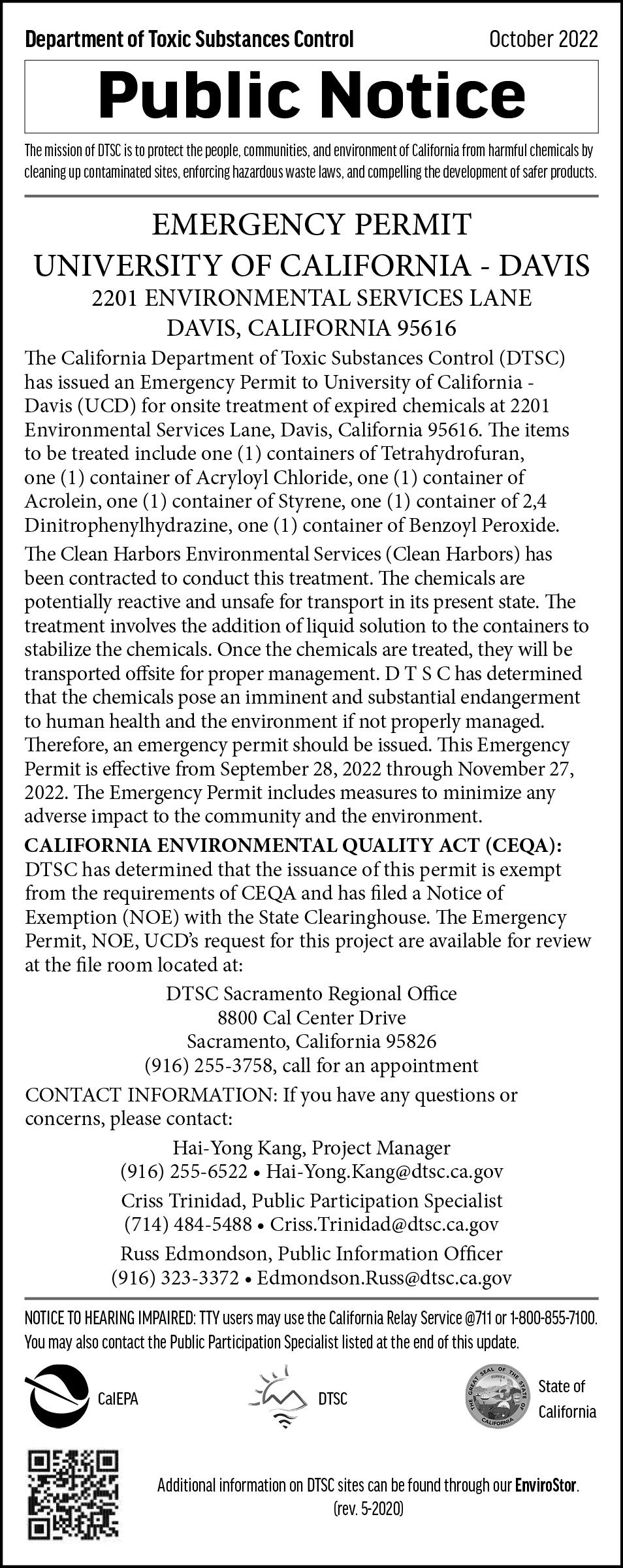
The person called police and provided a description of the get away vehicle, which patrol officers spotted in the area of West Cov ell Boulevard and Highway 113. Two peo ple inside the car “were found in possession of a catalytic converter and various narcotics,” Beckwith said.
James William Gar rett, 57, of Nicholas; and 38-year-old Shombe Shabazz Davis of Vallejo; both were booked into the Yolo County Jail on grand theft, conspiracy and drug-related charges.
No. 2. We’re No. 2.”
How many times have you ever heard someone express those words with gusto?
Not often, I’d think.
But, unless you’ve been taking a long nap, you probably know by now that UC Davis has been ranked as the second-best public university in the land by the Washington Monthly 2022 Col lege Guide and Rankings.
Whether or not these rankings come out monthly is unclear.
Being No. 2, of course, can mean a lot of things. Coming in second in the Boston Marathon is not the same as coming in second in a game of pickleball. One gets you a silver medal and the other gets you nothing.
Avis used to advertise that it was second only to Hertz. And don’t you know it, Avis rhymes with Davis.
Years ago some sort of rating service claimed that Davis was the
second-most-educated city in the country right behind Chapel Hill, but we never knew if that was based on the number of folks who had graduated from kindergarten or the number of PhDs per capita.
There’s no such mystery with our current ranking.
According to Washington Monthly, “The rankings evaluated colleges on their strengths in three equally weighted categories: social mobility, research, and commu nity and national service.”
Excessive use of the Oxford comma was apparently not a crite rion.
“This means that top-ranked colleges needed to be excellent across the full breadth of our mea sures, rather than excelling in just one,” the editors of Washington Monthly noted.

Before the big reveal, how ever, the editors praised the University of California and the California State University systems for having many cam puses ‘in the upper echelons” of its rankings. All this did was make me fear that our dreaded rival across the Causeway had edged us out for No. 1.
“Among public universities, UC Davis scored better than every other college in the country except UC Berkeley, which earned the No. 1 spot.”
Surprise, surprise.
Still, we’ve come a long way since we were the University Farm or the obscure Northern Branch of the College of Agriculture. Back
The University of California system announced Friday that it will accept fall 2023 undergraduate applications begin ning Oct. 1, a month earlier than the uni versity system has opened the filing period for applications in recent years. The appli cation opened Aug. 1. The deadline is Nov. 30.
University leaders said the expanded fil ing period was introduced to give prospec tive students more time to weigh their options.
“We recognize that the application period can be stressful and confusing, which is why we hope the expanded timeline will allow prospective students to work on their applications earlier and afford them the opportunity to research the campuses that best align with their aspirations for college,” said Han Mi Yoon-Wu, executive director of
Undergraduate Admissions at UC.
The university encouraged applicants to “spend ample time” working on their appli cations and advised them to not wait until the last minute to submit them.
“As our campuses begin their academic year, the admissions team at the University of California is busy planning for the upcoming application cycle and cannot wait to welcome the next class of excep tional undergraduates to the University,” said Yoon-Wu.
Prospective applicants with questions about the process can contact the UC Application Center via phone or email. The center is available Mon.–Fri., 10:00 a.m.–6:00 p.m. PT at (800) 207-1710 (within the U.S.), (925) 298-6856 (outside the U.S.) or via email at ucinfo@applyucsup port.net.
— Reach Caleb Hampton at champton@ davisenterprise.net. Follow him on Twitter at @calebmhampton.
memorial service for Amini last month.
ability to communicate with family and friends abroad.
then Davisites were driving trac tors instead of Teslas, and UC pro fessors selected our fertile ground for a campus because they couldn’t figure out how to grow tomatoes and asparagus in Berke ley.
Now, being No. 2 — in anything — doesn’t generally sit well with folks in Davis, but I have a plan to reverse those standings. It’s really very simple.
All we have to do is find my undergraduate transcript buried deep in the bowels of Mrak Hall and somehow transfer all that information to Berkeley as if I were a student there. This singular act would simultaneously raise the overall GPA at UC Davis and drop the overall GPA at Cal.
And once and for all, we’d be No. 1 in the country.
Which is clearly where we belong.
— Reach Bob Dunning at bunning@davisenterprise.net.





Federal immigration authorities arrested a sus pected human smuggler — also known as a “coy ote” — accused of trans porting undocumented citizens through Yolo County, according to the U.S. Department of Jus tice.
Mateo Gomez Gonza lez, a 29-year-old resident of Mexico, was taken into custody Monday at a gas station near Dunnigan in northern Yolo County, U.S. Attorney Phillip A. Talbert said in a news release.
according to Talbert.
“Specifically, the driver of a vehicle involved in the transport of Mexican citizens to the United States was threatening to drop the relative and fam ily friend at an unknown stash house rather than to the awaiting family mem bers if additional pay ment was not made,” the news release said. “Acting on the tip, law enforce ment met the vehicle at a gas station, discovered four passengers in the vehicle who did not have lawful status in the United States, and arrested the driver, Gomez.”
BurtUC Davis leaders voiced support last week for stu dents and employees at the university who are from Iran. Over the past twoplus weeks, Iranian security forces have cracked down violently on nationwide anti-government uprising sparked by the death of Mahsa Amini, a 22-yearold woman, in the custody of Iran’s morality police. Amini was arrested for allegedly violating the country’s hijab law.
According to a statement released by UC Davis lead ers, the campus’ Iranian Student Association held a
“We are deeply saddened by the death of Ms. Amini and those who have lost their lives while protesting in Iran,” the UC Davis leaders said. “UC Davis is committed to upholding fundamental human rights. We affirm the dignity inherent in all of us and strive to maintain a climate of equity and justice. We stand against the use of violence, repression and discrimination.”
In response to ongoing protests in dozens of cities across Iran, the govern ment has disrupted inter net access for many Iranians, limiting their
“Many UC Davis stu dents and employees are facing challenges and obstacles to communicat ing with family and friends in Iran and this, of course, can cause a lot of anxiety and stress,” the UC Davis leaders said. “Our thoughts are with our community members and others throughout the world who have connections to the region and who are worried about their families and loved ones.”
— Reach Caleb Hamp ton at champton@ davisenterprise.net.
From Page A1
for the district’s educational efforts. However, the dis trict is also seeking commu nity members to serve as part of the Core Planning Team in this process. Along side this team will be a number of experienced facilitators from Perfor mance Fact Inc. to guide the district in this process.
The meeting will include an update on the special education program review from Dona Meinders of WestEd. The district hired WestEd to review its special-education program and parents, staff and com munity members will be able to provide feedback on the update on the district website.
There will be an approval of the 2021-22 unaudited
actuals report. This comes as a required accounting of the district’s revenues and expenditures from July 1, 2021, to June 30, 2022.
Also on the docket is an approval of Resolution 20-23: Adoption of Expen diture Limit. This estab lishes the district’s GANN limit for the 2022-23 school year at $74,047,839.09 and the recalculated 2021-22 appropriation limit at $67,013,517.30.
Next will come the 202223 consolidated applica tion, Part 1. This is used by the California Department of Education to distribute categorical funds from the various federal programs to school districts. Part 2 of the process is set for the spring of 2023.

Meanwhile, Resolution
17-23: “Sufficiency of Instructional Materials” is up for approval. This hear ing is required to establish eligibility to receive instruc tional material funds, as is the subsequent adoption of a resolution stating whether each pupil in the district has sufficient text books or instructional materials in specified sub jects.
There will also be approvals to recognize October as Dyslexia Aware ness Month, Farm to School Month and Filipino American History Month, as well as Oct. 9-15 as the Week of the Public School Administrator.
The meeting will begin at 6:30 p.m. at the Commu nity Chambers, 23 Russell Blvd. in Davis.
Gomez came to author ities’ attention on Sept. 28, when a Sacramento resident called law enforcement to report concerns about his relative and friend being held over a payment dispute in a humansmuggling operation,
If convicted, Gomez faces a maximum sen tence of five years in prison for each person smuggled. He is being held without bail at the Sacramento County Jail pending his federal court proceedings.
Irecently read “Breaker Boys,” a nonfiction story about coal miners in the little town of Pottsville, Pa., in the early 20th century. Mostly, it’s about football before the National Football League.
Back then, communities formed clubs, sort of like we do these days with soccer, except there was no league to coordi nate or regulate. It was pretty bare-knuckled and brutal. The clubs played each other for a small financial prize to the win ner, but huge bragging rights.
The Pottsville Club was the Maroons, and team members at the beginning were pretty much all from the local coal mines. The first couple of chapters describe, in great detail, the life and con ditions of a coal miner. The foot ball narrative is gripping, but the descriptions of what life was like for a coal miner were equally fas cinating.
The Pennsylvania coal mines were structured vertically. If you wanted more coal, you had to go deeper. And deeper. In this mine the miners were at 1,000 feet below the surface. No natural light. No sound. No heat. No space. Breathing dangerous gases, coal dust, mold. Spending 10 hours a day “soaked from leg to lamp in thick, wet mud.”
Working at times on your hands
and knees in chambers less than 3 feet in height. Lifting 4-foot steel drills to create holes to place dynamite. Like jackham mering, but horizontal rather than vertical.
Miners were paid about $2 per 10-hour day in 1920, about $17 today. But the miner didn’t see even that piddling amount after deducting fees paid to the coal company for food supplies, housing and rental of tools.
Thus, as the book puts it, “leav ing most miners little more than indentured servants with fancy lamps on their caps.”
And it was dangerous. Miners could be crushed by cave-ins, suffocated from loss of air, maimed or killed by explosions and drowning was common.
Industry historians estimate that “from 1900 to 1920, during coal’s peak as the country’s natu ral resource of choice, in Penn sylvania alone nearly 12,000 miners (roughly two men per
day)” were killed. This doesn’t count the thou sands who died of black lung or tuberculosis, nor does it include multiple adverse health effects not only to miners but also to the public at large.
And mining coal was the only game in town, so sons followed fathers into the mines. Cruelly, if a man died in the mines, his body was dumped in the front yard of his house. If the tools he rented in the course of his work were damaged, a bill was pinned to the body. The family of the dead miner was given 48 hours to provide a replacement or risk losing their housing.
net-zero economies starts and ends with metals. Without cop per, nothing is possible.” The trouble with the Resolution Mine is that it is directly below land that is sacred to the Apache Nation.
An article in the New York Times describes controversies in Virginia and other parts of the East Coast over the installation of very large solar farms. The article is titled, “Are There Better Places to Put Large Solar Farms?” and references, as an example, the 4,500-acre Ran dolph Solar project that will “take out some 3,500 acres of forest” and is only one of six such farms planned for the area.
of the coal mines in Pennsylva nia, but it’s a good bet that extraction of lithium, copper, nickel and other metals involve awful conditions in mines in Africa and other places around the globe. Large-scale solar installations or offshore wind projects involve environmental trade-offs.
So, how best can we reduce reliance on extraction and mini mize environmental damage?
gears, an article in Bloomberg Businessweek titled, “The Copper Conun drum,” addresses the “Resolution Mine” controversy in Arizona. The mine has the potential to provide “18 million metric tons” of copper, “enough of the indis pensable metal to supply more than half the electric vehicles” built in the coming decades.
According to the article, “a typical gas-powered car uses roughly 65 pounds of copper for wiring and electronics, but an EV requires more than twice that.” And, “The transition to
Solar, to meaningfully contrib ute to replacing fossil fuels needs to be constructed, in addition to on rooftops and warehouses, at scale. But where? Protests against the solar farms above rightfully point out deforesta tion, disruption of soil, pollution of streams and rivers among other adverse environmental effects. In addition, similar to the Resolution Mine’s disruption of sacred land, the residents of these areas protest the loss of rural qualities of life.
In summary, the green transi tion is not without significant harms. Mining technology in the U.S. has improved since the days
One way is to aggressively pro mote hydrogen as a source for electrical energy and the New York Power Authority has recently successfully mixed green hydrogen with natural gas and used it to power a retrofitted GE combustion turbine with signifi cant greenhouse gas emission reductions.
Second, push hard to promote small modular reactors. Nuclear power, for all its current short comings, has a record interna tionally far better than the coal industry and SMRs promise reducing or eliminating some of those shortcomings.
— John Mott-Smith is a resi dent of Davis. This column appears the first and third Wednesday of each month in the print edition of the Davis Enter prise. Please send comments to johnmottsmith@comcast.net.


intensive support and supervision services aimed at increasing a participant’s overall quality of life while also reducing recidi vism.
Last week, Simmons cele brated his graduation from AIC, embarking on a new path he says embraces sobri ety and accountability while being a productive member of society. He presented a wellness plan that includes a healthful diet, exercise and steady work in the
substance-abuse recovery field.
Simmons’ recovery also involved participation in restorative justice efforts, writing letters of apology to each of his past victims.
“Even though I will not get to pay these people back the money, I can use these experiences as a motivation to actively strive to be a better person,” Simmons said.
At Simmon’s Sept. 29 graduation ceremony in Yolo Superior Court Judge Tom Dyer’s courtroom,
Kathryn Lane Thorpe (Fenlon) died peacefully at her home in Davis on Sept. 20, 2022, following com plications from pneumo nia.
Kathy was born on Nov. 7, 1937, in Minneapolis to Gerald and Mildred Fenlon (Ridgeway). She was the older sister to Marilyn and Jim. The three were always together and affectionately called themselves “The Three Musketeers.” She graduated high school early and entered the convent at age 16. While there, she attended nursing school and loved working in labor and delivery. At age 21, she decided she wanted a fam ily and left the vocation, but her devotion to the Catholic faith never wavered and inspired a life of joyful service to others.
Kathy completed her bachelor’s degree in Eng lish at the University of Minnesota, where she played the cello in the uni versity orchestra. She was teaching high school Eng lish when she met Bob Thorpe and they married in June 1963.
Bob worked for the U.S. Navy and the newly mar ried couple decided to make their home in San Diego where their first child Teri was born. Tom, Anne and Molly soon fol lowed, and Kathy led a busy life as a mother of four children. She loved the ocean and would gladly take a car full of kids for a

day at the beach. She enjoyed shopping, volun teering in schools, scouting, eucharistic ministry, music and theater, and being team mom and PTA presi dent. As the kids got older, Bob and Kathy welcomed their first dachshunds into their home, sparking a life long love of these sweet dogs, which they were never without.
Kathy returned to fulltime teaching when her kids were teenagers and earned a master’s degree in special education at the University of San Diego. She taught junior high at Stella Maris Academy and became vice principal before she retired. She was a well-loved teacher who took pride in her work and inspired a generation of students.
Upon retirement, Kathy and Bob moved to Davis in 1999, where their oldest daughter Teri was raising her family. Kathy loved being a grandma, and Davis became the home base for all her children and grandchildren to gather. She poured her time into growing and making things, from orchids and roses to scarves and dolls, with a special focus on cre ating beautiful quilts.
In Davis, she quickly built up a vast network of friends and neighbors that gave her so much joy. When Bob’s health began to fail, she cherished their support until his death in 2016. Her
The Enterprise publishes brief death notices
age, city of residence,
program partners took turns praising Simmons for his achievements.
Dyer, who has presided over the program for the past nine months, called Simmons a “model partici pant,” having shown remorse for his past and gratitude for the help he’s received.
“I have little doubt he will continue in the hard work of recovery and remain an inspiration to others who are working to better their lives through rehabilitation,” Dyer said.
Deputy District Attorney Matt De Moura, the AIC prosecutor, agreed.
"We’re not born with wings, but that doesn’t mean we can’t fly. You, Keith, have soared to new heights and everything you see is yours for the taking,” De Moura said. “Seize this moment. Carpe diem. Today is just the beginning of a long list of accomplish ments that you will achieve.”
Davis police Officer Derek Russell, who arrested Simmons several
times over the years, also took part in the celebra tion.
"What we see today is how we want to see you. Not putting cuffs on you. Not taking you to jail," Russell said. "Seeing you succeed by working so hard on your journey to self healing. I hope to see you again but not under cir cumstances similar to the past."
To others making their way through the AIC pro gram, Simmons encour aged a regimen of honesty,
transparency and reliance on support networks, all of which he says helped him find success.
“Piece by piece, I can try to make the world a better place, and that to me is priceless,” Simmons said. “It’s an honor and a privi lege to have been in this program, and I aim to make the lessons I’ve learned stick with me, for life.”
— Reach Lauren Keene at lkeene@davisenterprise. net. Follow her on Twitter at @laurenkeene
final years were spent serving as a lead pas toral min ister at St. James Catholic Church.
She found a great sense of purpose in bringing communion to sick and elderly parishio ners.
Her warmth, smile and merry laugh will be deeply missed by all. Though her passing was sudden, we take comfort in knowing her kind and generous spirit touched so many people throughout her life.
Kathryn was preceded in death by her husband, Robert P. Thorpe, and brother James L. Fenlon. She is survived by her sister and brother-in-law, Mari lyn and Larry Kelly of Bloomington, Minn.; chil dren Teri Greenfield (Steve) of Davis, Tom Thorpe (Rebecca) of Noblesville, Ind., Anne Thorpe (Ned Schantz) of Montreal, Que bec, and Molly Bullard (Jim) of Seattle; grandchil dren Melanie, Josh, David, Allison, Aidan, Adelaide, Ashley and Seth; greatgrandchildren Arayah and Nykoli; and many nieces and nephews.
A funeral mass and cele bration of life will begin at 10 a.m. Monday, Oct. 10, at St. James Catholic Church, 1275 B St. in Davis. In lieu of flowers, donations in her name can be made to Sut ter Care at Home or to the charity of your choice.
Velma Lagerstrom, who served for over 30 years in the Davis public schools, died peacefully in her sleep on Thursday, Sept. 29, in Santa Barbara. Born in Kansas, Velma and her fam ily followed her grandpar ents to Kingsburg in 1938.
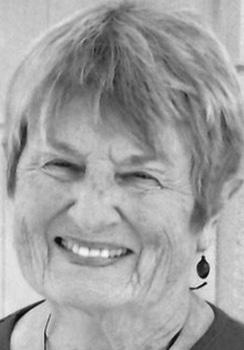

As one of 40 Lungren first cousins, she grew up sur rounded by proud and lov ing relatives in her close-knit farming family. A skilled pianist and church organist, Velma was very involved in the Kingsburg Covenant Church, sharing the music ministry with her future husband, Ron. Married in 1954, Velma taught in public schools while Ron finished his degree at UC Berkeley.
Velma continued to teach (and play the organ) while the couple served churches in Massachusetts, Con necticut and Illinois, before being called to Davis in 1970. Velma always talked about her 42 years in the Davis community as the happiest of her life. It was a wonderful place to raise their two sons, welcome their daughter-in-law and son-in-law into the family, and celebrate the births of their grandchildren.
Velma’s passion for educa
tion and learning, first as a teacher and then as princi pal, found a perfect home at Birch Lane Elementary. As principal for 22 years, she was inspired by the commit ment to educational excel lence of her staff, energized by a dynamic and diverse team. It was while serving as interim principal in 1980 that Velma was diagnosed with breast cancer.
An early proponent for aggressive treatment, she became an activist, educat ing and supporting others in the fight for greater awareness and treatment options. One of her proud est moments was her involvement with Dr. Ernie Bodai and Representative Vic Fazio on the launch of the Breast Cancer Research Stamp (since 1998 the BCRS has raised over $100 million). Grassroots advo cacy was the perfect outlet for Velma’s educational and organizational skills!
Velma and Ron left Davis in 2012, moving to the Cov enant Living community in Santa Barbara. Velma volun teered in the local schools, cheered friends and neigh bors with her musical skills, and served on several resi dent committees. With Ron’s
passing in 2021, she was fortu nate to spend the rest of her life with close friends in the caring Samarkand community.
Velma was a wonderful wife, mother, grandmother, great grandmother, mentor and friend. Our family — sons Larry (Lori) and Glen (Dave), her grandchildren Ryan (Naomi) and Linnea (Ben), and her great grand children Noah and Eleanor Rae — along with so many others are blessed to have been a part of her life. Memories of her bright smile and attitude live on:
“This the day that the Lord has made; let us rejoice and be glad in it!”
Psalm 118:24
As a remembrance, memorials can be made in Velma’s name to the Davis Schools Foundation, P.O. Box 1154, Davis, CA 95617, or www.davisschoolsfoun dation.org/donate.
Months later, in the summer of 2020, St. John’s announced it was shutting down Stollwood and a year and a half later, announced plans to close the entire campus.
The St. John’s Board of Direc tors cited decreased demand for services, a labor shortage and frequent lockdowns during the pandemic in its reasons for clos ing.
At that time, the board expressed interest in either the county or Dignity Health pur chasing the property. Dignity had already begun making plans for acquiring the Stollwood building for an expanded Adult Day Health Center but was not inter ested in the full property, county staff told supervisors in April.


The county then put forward its plan for purchasing the cam pus — largely with American Rescue Plan funds — and using it for an array of purposes, includ ing 32 units of low-income senior housing; 37 housing units for low-income CalWORKS families;
a new Adult Day Health Center; a children’s receiving center and more.
But there was a competing pro posal at the time — a group of individuals led by former St. John's board member Stan Levers and including a former Woodland mayor and other for mer board members and staff wanted to purchase the site and resume its previous operations.

The St. John’s board turned down that proposal, however, with board member Jenee Rawl ings (president and CEO of Yolo Federal Credit Union) telling county supervisors communities like St John’s were disappearing across the country after strug gling financially even before COVID-19 hit.
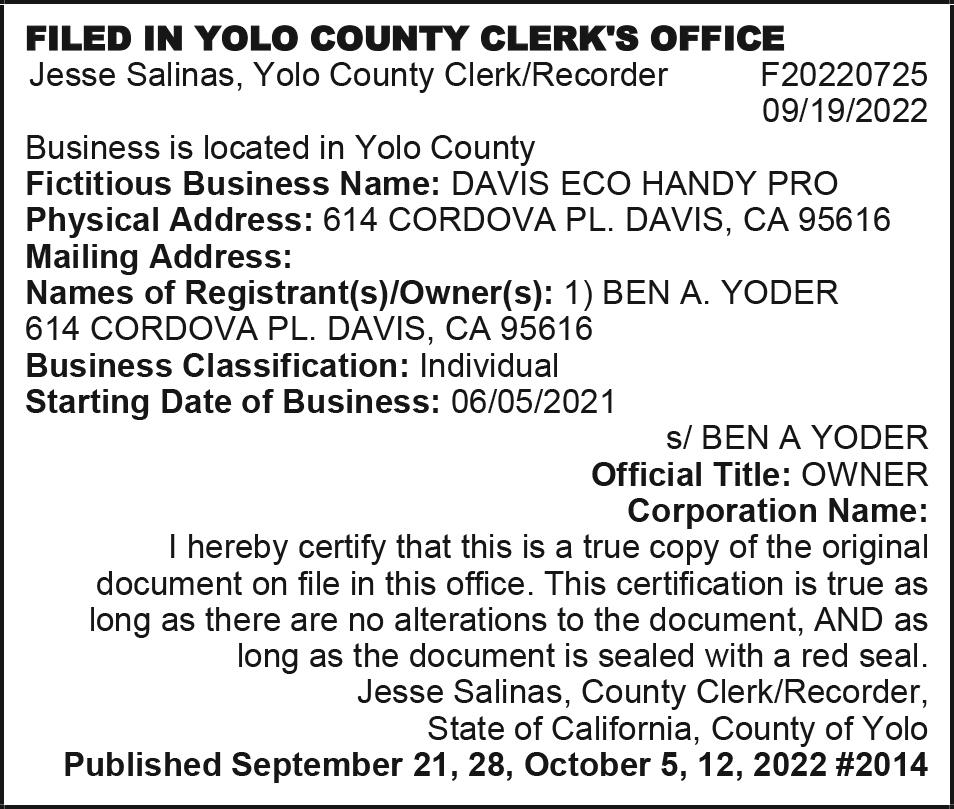
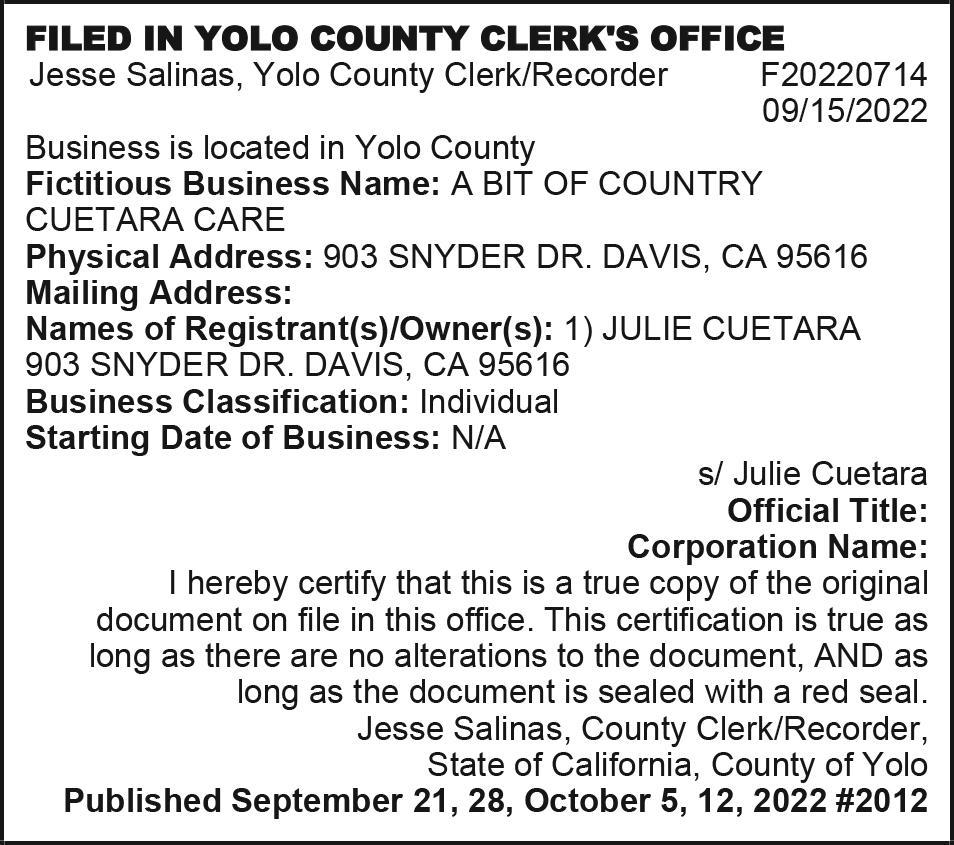
“They enjoy no economies of scale and simply can’t compete any more with large systems,” Rawlings said. “It’s not a viable option to reopen and relicense these facilities, which will require extensive and expensive remodel ing that will be an economic bur den for (Levers’s) group.
“Mr. Levers’s team would have to start from scratch in an envi ronment with very slow occu pancy recapture and a significant workforce challenge,” Rawlings said.
A lawsuit was subsequently filed in May, naming the St. John’s board as well as the county as defendants and seeking an injunction against the county’s purchase of the property.

The lawsuit alleges the current St. John’s board “failed to per form their duties of due diligence to evaluate whether the proposal, as submitted or as it might rea sonably be modified, could suc ceed in continuing the operations of (St. John’s Retirement Village) …” and that the board did not negotiate in good faith with Levers and his group.
The lawsuit also disagrees with the notion that facilities like St. John’s are no longer financially viable and alleges instead mis management by the St. John’s board leading to insolvency, which, in turn, led to the decision
to close in January.
That lawsuit — currently set for trial in April 2023 — prompted county supervisors to add a caveat to their purchase offer in May, namely that the law suit must be dismissed with prejudice prior to closing and allowing the county to terminate the agreement if closing did not occur by Sept. 30 due to the law suit.
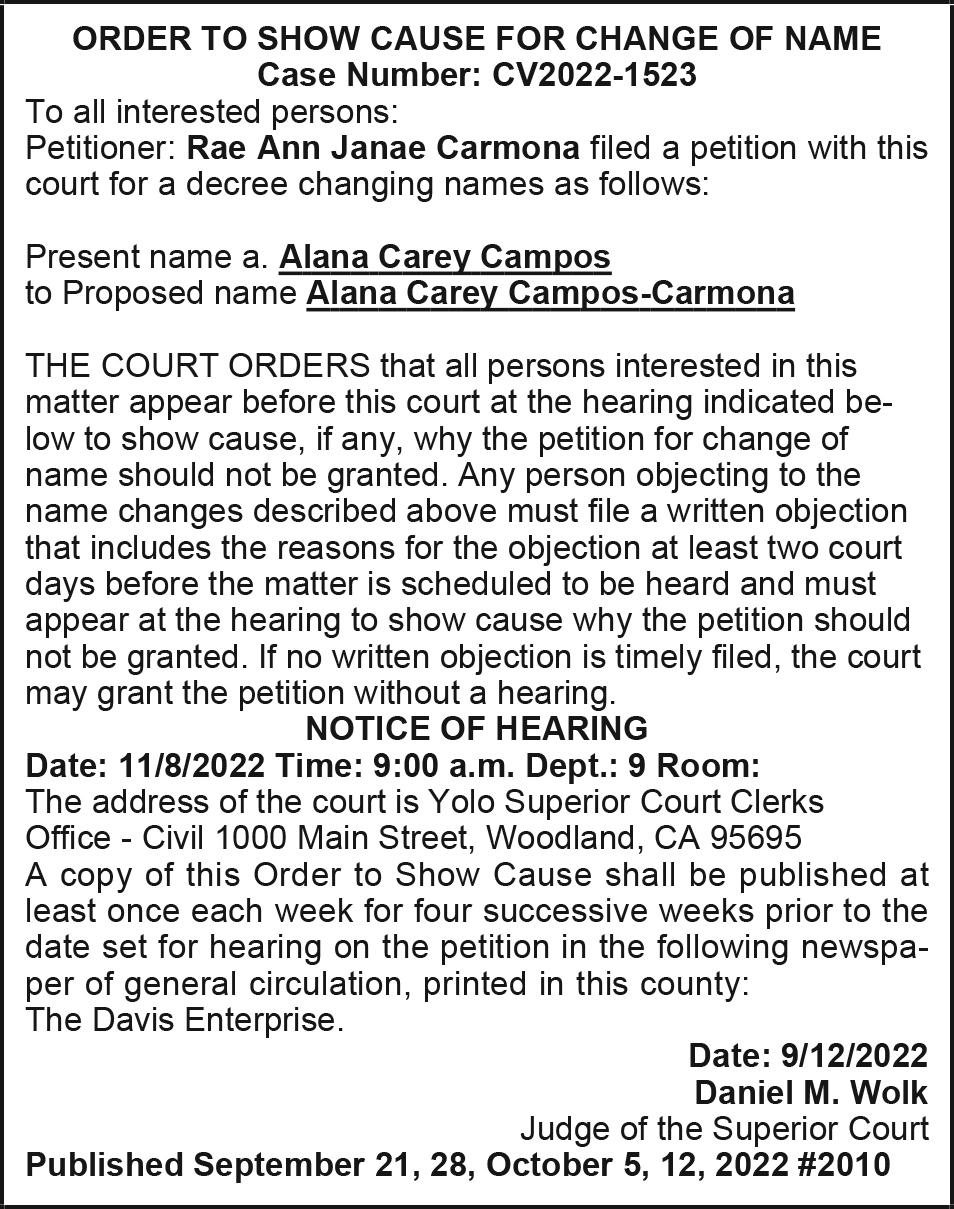

Sept. 30 came and went last week, and on Monday, the county announced it was terminating the agreement after St. John’s “could not meet the conditions for clos ing, including the resolution of pending litigation involving the property.”
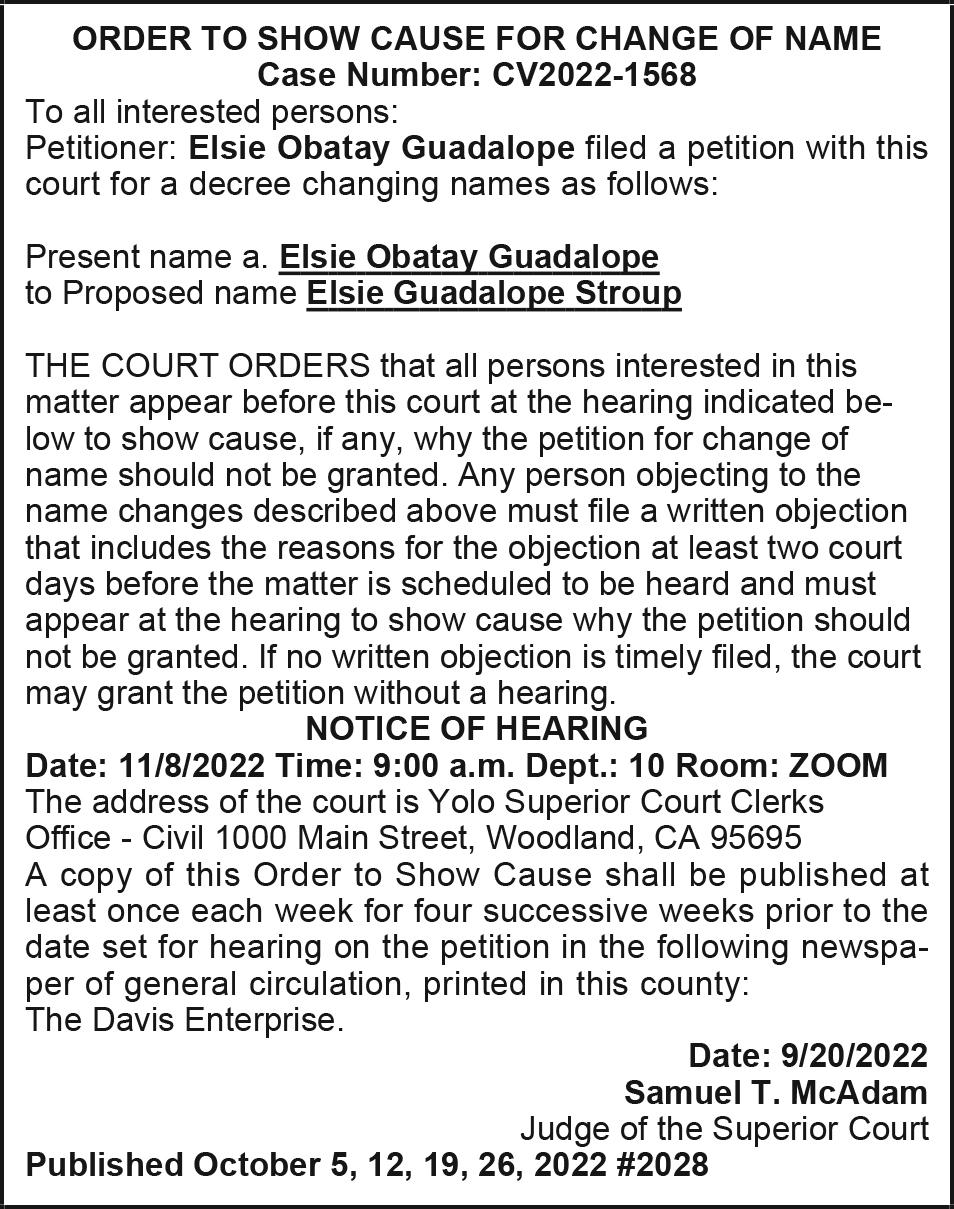
Said Supervisor Angel Barajas: “No clear path exists for the county to continue its acquisition effort without facing considerable additional costs, uncertainty, and an unknown timeframe for clos ing.
“Unfortunately, my colleagues and I cannot move forward with the opportunity to re-envision the (St. John’s) campus as a single
location providing services to aging adults and other vulnerable Yolo County residents in need of assistance,” Barajas said.
Supervisor Oscar Villegas of West Sacramento agreed, saying, “the fate of this unique property is now beyond our control, but we will double down on other efforts to expand and improve the qual ity of housing and services avail able to seniors and low-income Yolo County residents.”
Meanwhile, the county said, Dignity Health continues to lease a building for an expanded Adult Day Health Center facility at the St. John’s site.
“The ADHC is a leading county priority, and the county has pro vided $2.5 million to Dignity to assist its effort to open an expanded ADHC,” a press release from the county stated. “The county will remain actively involved with Dignity Health in efforts to develop an expanded Adult Day Health Center at the (St. John’s) site or another feasi ble location.”

students who intend to transfer to a four-year uni versity successfully do so within four years, accord ing to the Public Policy Institute of California.
Abeeha Hussain, a fourthyear UCLA student and the transfer student affairs offi cer for the UC Student Asso ciation, said she believes students will take advantage of dual admission, as long as UC campuses actively pro mote the program to local high schools.
“It really creates this
incentive for students to be like, ‘I’m not getting rejected because I’m not good enough for the school, I’m being deferred to admission later,’ ” said Hus sain, who transferred from Palomar College. “Of course I’ll go to my com munity college if it means that I’ll eventually get to go to the UC of my dreams.”
Approximately 10,000 high school students apply to the UC every year with out meeting freshman eli gibility requirements, UC admissions director Han Mi Yoon Wu said at the
Regents meeting. Of this population, 3,700 students have not met the UC’s high school coursework require ments but have GPAs of 3.0 or higher, making them eli gible for the pilot program.
Students who receive a freshman offer of admis sion to the UC are excluded — even if they join the 7,000 individuals who annually turn down their UC acceptance to attend a California Community Col lege. UC may also exclude some majors from the dualadmission pilot, which will admit students until fall
2025, including computer science and engineering at certain campuses.
A similar program is in the works at California State University.
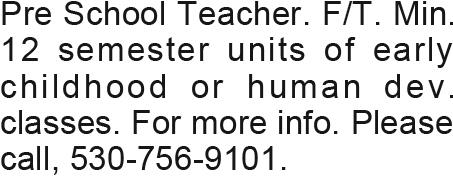
Entering community col lege with a clear path to a UC campus can set transfer students up for success, said Hans Johnson, a senior fellow at the Public Policy Institute of Califor nia. He added that the early offer of admissions distin guishes the pilot program
from existing transfer path ways at the UC, which don’t admit students until spring and lack the same access to UC campuses and support.
Dual admission “could be really powerful in con necting a student with the campus or campuses that they’re interested in going to,” Johnson said.
Regent Eloy Ortiz Oak ley, the former chancellor of the California Commu nity Colleges, said he believes the program will promote greater geo graphic diversity among UC transfers by providing a
clear pathway forward for students in underserved regions of the state, such as the Central Valley and Inland Empire.
Students of color, as well as individuals who are lowincome or the first in their family to attend college, may be more likely to apply to the UC without meeting admission requirements and have the most to gain from the pilot program, added Jessie Ryan, execu tive vice president of the Campaign for College Opportunity, a research and advocacy group.
Grief, depression, anxiety, fear, brain fog, digestive problems — these last three years have fed them all. I’m sure I don’t have to elaborate the reasons. But besides all these weighty problems (and no doubt related to them) is the serious waning of fun in my life.
I’m starting to reclaim fun in small ways, but many of the activities I had taken for granted before the Plague are slow to return (thanks to various factors including continued COVID concern) — campus concerts, films at the Varsity, breakfast at Delta of Venus, gallery openings, walking the streets of a “new” city, spending an afternoon at son Jakob’s brewery in Willits, hopping on a train to the Bay Area for a Davis-free day.
Granted, my idea of fun isn’t everyone’s. For me fun is “forag ing” for food at interesting places like Buy-Rite market in San Francisco or farmers markets almost anywhere. Or examining bottles from the shelves of a good wine shop like Vintage Berkeley or Back Room in Napa. Both of these, though, require an entire day or more since I have to get there and back.
For quick thrills, I head over to The Pip in Dixon. I peruse the bottles, note old favorites (like the Balestri Valda 2020 Soave Classico) and new arrivals, care fully make my six-pack collec tion, and (best of all) talk to
proprietor Amy Grabish. I mean, what fun is wine if you don’t talk about it to fun people?
I’m not quite ready to sit at the bar or a table and order a glass, settling in for an hour or two. Maybe after my dose of the new vaccine? But just the 15-minute back-road drive and popping in for another 15 gives me a boost.
And then: new wines to try! And new wines to share with readers.
From my latest excursion here are some wildly different bottles that announce “fun” from sip one.
First, the Paladin Raboso Fiore ($19), a sparkling red from the Venice region. Raboso is one of the oldest varieties in that area, yielding what Paladin calls “Veneto’s sassy answer to Lambr usco.” Dry, fruity (think cherry), intensely fragrant (think violets), and, of course, bubbly, it makes a fun (really, red bubbles?) occa sion of even the simplest meal. We drank it with our Friday night sourdough pizza — topped with fresh mozzarella and roasted eggplant and red pep pers. Don’t bother with flutes. The Venetians drink it in large
glasses, for lunch and dinner, well-chilled, no pretensions allowed. Just easy fun.
It was such a relief to get a couple of really rainy days. Even though the thermometer hov ered at 70, the downpour made me long for a cold-weather din ner. I indulged my desire by making a big pot of putanesca sauce — that is, I emptied the pantry into it. Half an onion, lots of garlic and herbs, the roasted eggplant remnants from that pizza, jarred red pepper and grilled artichoke, porcini and a can of good tomatoes simmered for hours and served over penne with freshly grated Romano.
The wine — a red, of course — was from Crete: Domaine Pateri anakis Kotsifali and Mandilari 2018. Both kotsifali and mandi lari, often blended, are native to the island, these grown organi cally. The resultant wine is a deep red (watch your teeth!) with soft tannins and spices and a touch of leather. Wonderfully earthy, it was just the thing for this hearty pasta. These grapes typically produce relatively low alcohol wines; this one drinks more lusciously than you would expect from 13%. Definitely worth a try for Big Red lovers and light red lovers alike ($17).
Third, a wine whose grape is much more common than raboso, kotsifali, and mandilari (all new to me before this splurge): a chardonnay. You may,
like me, have a love/hate rela tionship with this grape. If you’re a regular reader you know I roll my eyes (or the print equivalent) at big, oaky, buttery California chards, but this French chard — the La Closerie Des Lys 2019 — from the cool hills of Limoux (Languedoc) is another creature entirely.
Unoaked, fresh, light-tomedium bodied — yet intensely a chard with its green apple and lemon-and-lime zest elegance.
To be honest, I wasn’t expecting such a structured, interesting, terroir-driven chard for $15. An advantage of choosing a wine from a relatively un-famous region. Its Chablis sibling would be twice the price. But there it was, elevating our dinner sand wiches (focaccia piled high with fresh tomatoes, red onion, Man chego cheese, and roasted red peppers, dripping with garlic aioli).
I’ll try my next bottle with a seafood concoction of some sort — the crisp, beautifully aromatic, and bright yellow wine would be perfect with oysters or scallops.
Want something made closer to home? The Pip also carries an excellent selection of homegrown — like the Groundwork Counoise 2020 ($19). I wasn’t going to include this because I’ve written about the wine before — though a previous vintage. We drank this bottle with pizza one drab Friday evening, and, wow!
It starts with a burst of juice (think cranberry) and goes on to become earthy with good acidity, light tannins and lingering deli ciousness.
Paso Robles Winemaker Curt Schalchlin of San Liege picks the grapes from a vineyard in Arroyo Grande Valley and uses the car bonic maceration method com mon to Beaujolais. Only 11% alcohol, this wine is surprisingly intense, very food-friendly, and great for the season. I’m plan ning on at least one bottle for our Thanksgiving feast — I can’t imagine a more suitable wine for turkey and trimmings.
New York Times wine colum nist Eric Asimov often reminds readers that the best way to buy wine is through a good wine shop. And the best wine advice usually comes from the staff there. At a place like The Pip, you can be sure that even if you pick less expensive bottles (all of these are under $20), the care fully chosen wine will be good, and if you talk to Amy about what you like, maybe taste a cou ple of things along the way, you can be pretty confident in your choices. The Pip is now open on Sundays and is an excellent place for holiday shopping.
Have fun!
— Susana Leonardi is a Davis resident; reach her at vinosu sana@gmail.com. Comment on this column at www.davisenter prise.com.

Autumn is finally here in Yolo County and that means cooler temperatures, brighter foliage colors, and fall harvest. It’s also back to school season for local kids and many will be commuting to and from school on two wheels thanks to the wonderful bike skills training pro gram hosted by The Bike Campaign for schools in Davis and Woodland.
Close your eyes and think back: Do you remember the first time you rode a bike? Remember how it felt when your feet left the ground, gripped the pedals, and you could feel yourself
moving? Exhilarating and empowering! The Bike Campaign wants every kid to experience the uplifting feeling that comes from riding a bike. But sadly, not all kids do. For kids that don’t have a parent or other family member that knows how to ride a bike, it may not be a skill passed onto them at home. So where does a kid learn how to ride a bike? Enter bike skills training at local schools!
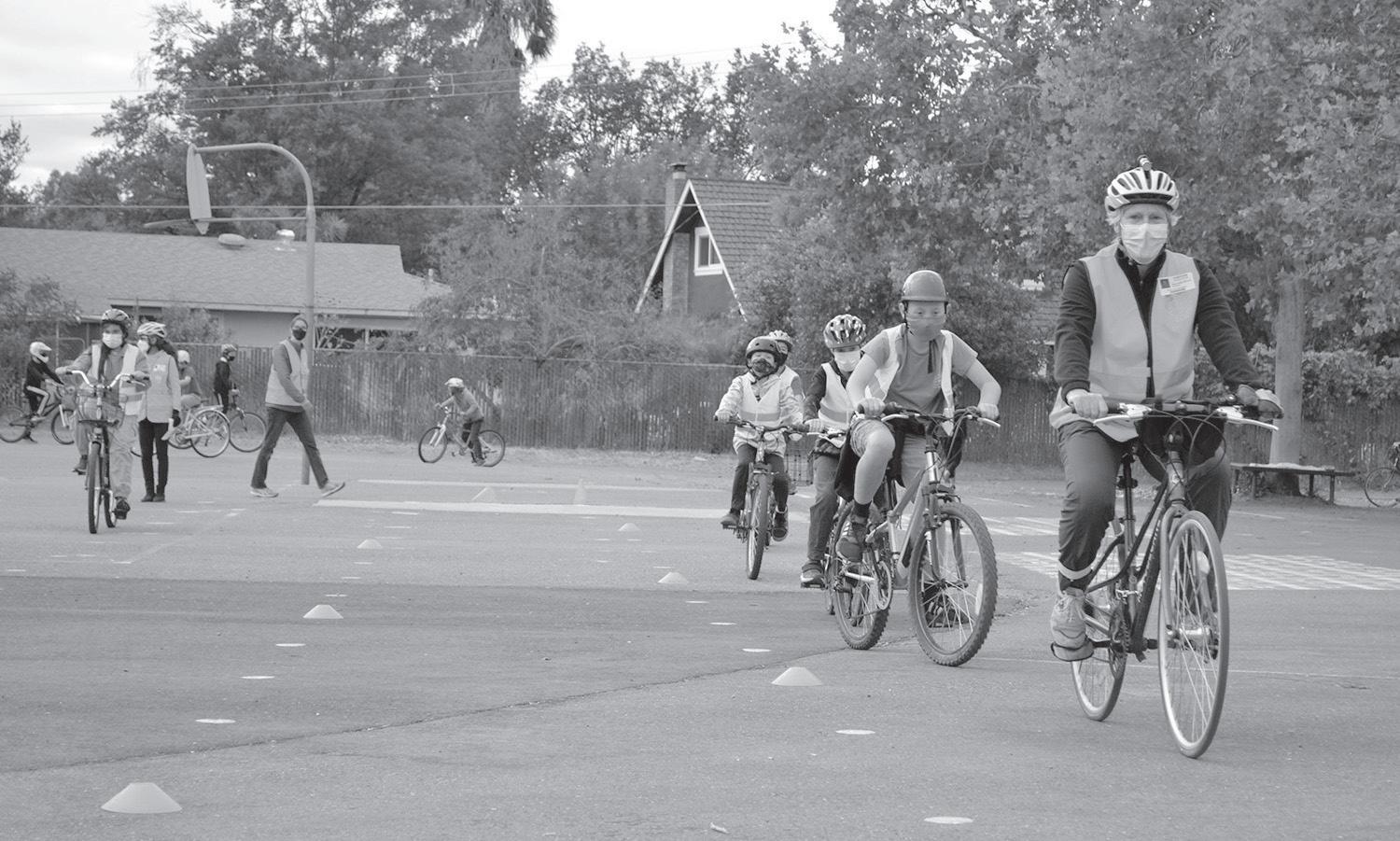
The Bike Campaign’s Bike Skills Training Pro gram fills a gap for kids that may not have had the opportunity to ride, don’t own a bike, or need to improve their skills to feel more confident on two wheels. Bike riding skills focus on proper bike and
helmet fitting, maintain ing a working bike, and learning the rules of the road and how to ride with a group. In August, The Bike Campaign worked in collaboration with city of Davis’ new Safe Routes to School director, Daniela Tavares, and Davis Police Officer John Ney, at five elementary schools: North Davis, Montgomery, Patwin, Korematsu and Birch Lane.
Kids ranging in age from 5 to 12 years old were given one-on-one atten tion to upgrade their bik ing skills. More than 40 kids learned how to ride a two-wheel bike using the easy “Balance Bike” method, while more than two hundred others improved their ability to ride in a straight line, do hand signals, and conduct themselves safely in simu lated traffic conditions.
The Bike Campaign pro vided two fleets of new bicycles to use for the trainings. Staff at the ele mentary schools were included and often com mented, “I learned so much!” Families were encouraged to visit the Bike Garage at The Can nery for free bike repair and, in some cases, free bikes for families unable to afford them. The Bike Campaign is currently booking several other schools as part of those schools’ physical education curriculum during the school day in Davis and Woodland.
The goal is to ensure that every second-grader is given the opportunity to
learn to ride a two-wheel bike and that every fifthgrader learns and practices the rules of the road. Bikesavvy parents and grand parents are encouraged to participate in the training programs. (If you are interested in getting involved as a volunteer, contact Bike Campaign Director Maria Contreras Tebbutt at funmaria@sbc global.net.)
The overall mission of The Bike Campaign is to reduce car trips to schools while increasing bike safety and joy. Through the Bike Skills Training Program, kids learn how to ride a bike in a safe, supportive, and fun envi ronment that improves their skills with the goal of making them a life-long rider. Kids can then ride to school as a means of trans portation, as well as ride for pleasure with friends and family. Once kids
The University of Alaska Fairbanks has announced the students named to the deans’ and chancellor’s lists for the fall 2021 and spring 2022 semesters. The lists recognize stu dents’ outstanding aca demic achievements.
Students receiving a 3.9 grade point average or higher are placed on the chancellor’s list, while those receiving a grade point average of between 3.5 and 3.89 are named to the deans’ list.
They include Josh Dominguez of Woodland, fall 2021 chancellor’s list and spring 2022 deans’ list; and Jordan Drefs of Woodland, spring 2022 deans’ list.
UAF is a Land, Sea and Space Grant institution, and is the leading doctoral degree-granting institu tion in the state of Alaska.
Since it was founded in 1917, UAF has been inter nationally recognized for research relating to the
Arctic and sub-Arctic, in areas such as biology, geo physics, engineering, natu ral resources and global climate change.nursing and music, along with 80 mas ter’s programs, 47 doctoral programs (including the Juris Doctor), the Educa tion Specialist program and Master of Laws program.
More than 100 Baylor University students have been named to the Sum mer 2022 Dean’s Aca demic Honor List, which recognizes Baylor under
graduates for their out standing academic work during each semester.
Students honored on the Dean’s List earned a mini mum semester gradepoint average of 3.70 with no grade lower than a “C” while enrolled in at least 12 graded semester hours. They include Maya Tan gaan of Davis at the Col lege of Arts & Sciences.
Baylor, in Waco, Texas, provides numerous aca demic and research oppor tunities across various disciplines through 126
learn safe cycling skills, parents feel more comfort able eliminating car trips to schools.

The result? Less cars, traffic and congestion on the roads, which decreases air pollution in the envi ronment. In addition, there will be less chaos during school drop off and pick up times which often bring long lines of cars snaking through school parking lots and spilling out onto the streets.
Where will all these bikes be parked once the kids get to school? At bike racks! Most schools in Davis and Woodland have bike racks for kids to use, and some are adding more on, including Holmes Junior High and North Davis. As bike use increases, schools will con tinue to add on more bike rack storage.
Riding a bike to school provides kids with a
baccalaureate programs in fields as varied as business, engineering, pre-medicine, computer science, nursing and music, along with 80 master’s programs, 47 doc toral programs (including the Juris Doctor), the Edu cation Specialist program and Master of Laws pro gram.
Laurie Stillman of Davis graduated with a bache lor’s degree in individual ized study from James Madison University during commencement exercises in August.
Founded in 1908, James Madison University is a public university in
built-in form of fresh air and exercise, a way to release energy before being stuck inside, and a chance to engage in social interac tion. Sounds like these kids are onto something. Kind of makes you want to jump on your bike and enjoy an autumn ride. ‘Tis the season for bike riding!
— Lisa Montanaro is the author of the book “The Ultimate Life Organizer” and is a freelance writer for print and online publi cations. She is currently revising her debut novel. When not writing, Lisa helps organizations and people be more productive. And when not working or writing, Lisa can be found on two wheels cycling! For more information about how to “Drive Less. Ride More.”, contact Maria Con treras Tebbutt at fun maria@sbcglobal.net or www.TheBikeCampaign. com.
Virginia’s Shenandoah Valley. JMU is one of the nation’s leading lights in higher education, where students enjoy engaging relationships with worldclass faculty who drive education innovation and support advanced research. With state-of-the art amenities and facilities, students have access to NCAA Division 1 athletics.
JMU also has the highest post-graduation job levels of all Virginia colleges.
— Do you know of some one who has won an award or accomplished something noteworthy? Email it to newsroom@davisenter prise.net.
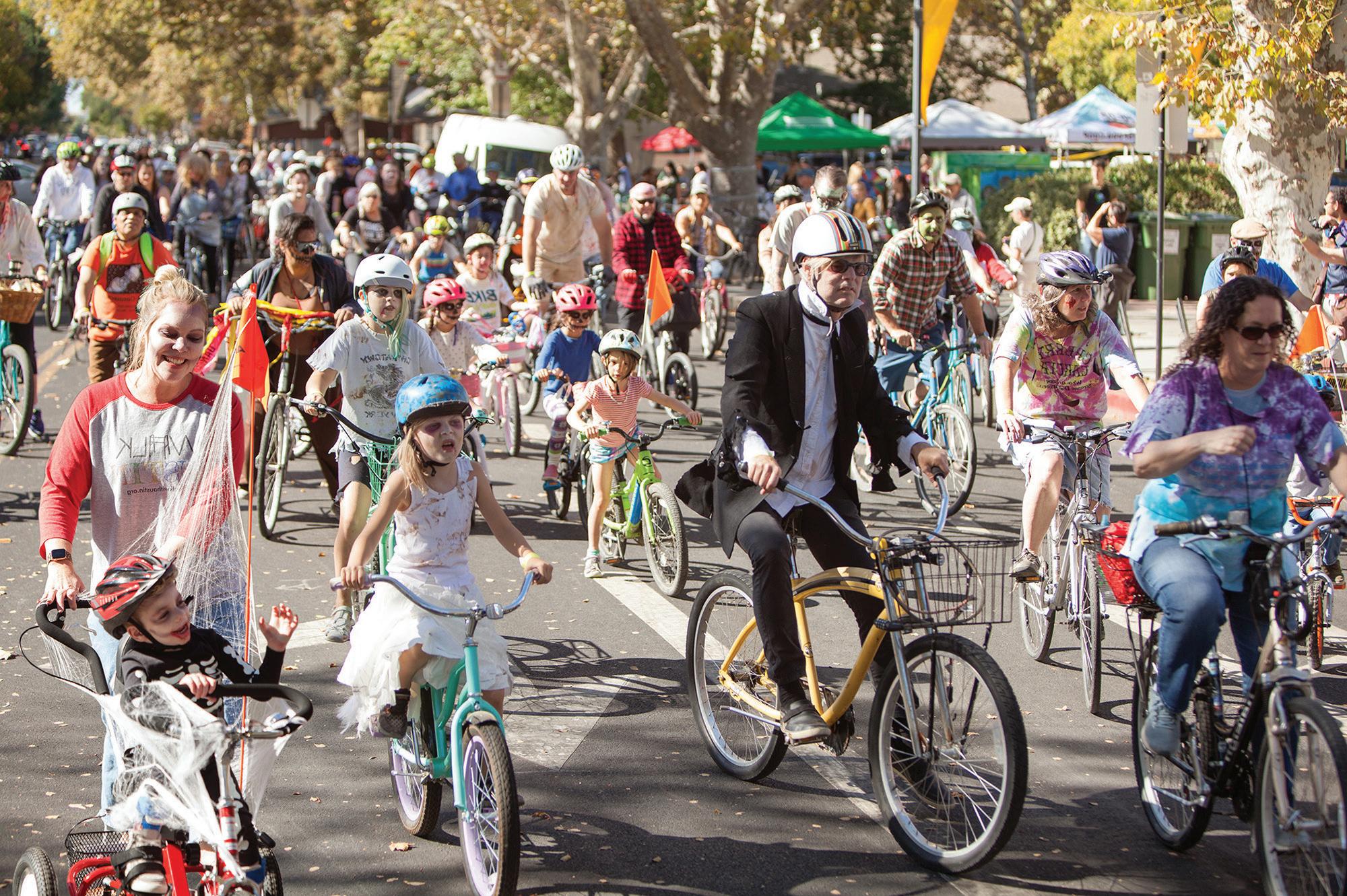
Visit Davis, home of the West Coast's Zombie Bike Ride festival from Satur day, Oct. 29, through Sun day, Oct. 30. Encounter endless Halloween specta cles, including hordes of the undead, rotting robots, swords, lasers, Halloween hounds, a giant inflatable octopus, and a skydiving grand finale! The Davis Odd Fellows and the Bike Campaign are delighted to partner with over 100 sponsors, collaborators, and media partners to pro vide unforgettable Hal loweekend experiences!
The Zombie Bike Ride's mission has always been to make bicycling available to everyone, including chil dren with disabilities. Over the past three years, event organizers have raised funds (primarily from sponsors) and donated more than $14,000 to Nor cal Trykers, an organization that creates custom tricy cles for children with dis abilities. Each tricycle costs about $1,000 to make, and funds from our events have provided 15 children with custom tricycles so far.
With the help of sponsor The Bike Campaign has been able to raise money for Norcal Trykers while keeping the the events almost entirely free to the public. More opportunities to donate to Norcal Tryk ers are available along the bike route.
If you're visiting from out of town, arrive early with your family and friends on Friday or Satur day and experience all that Davis has to offer: art, cul ture, a vibrant night life and lodging. Book a room in one of our 12 motels/ hotels, visit the UC Davis Arboretum & Public Gar den, and stroll our down town. Don't forget to bring, buy or rent a bike! Davis boasts a variety bike shops, including our fea tured partners: Ken's Bike-Ski-Board, Davis Cyclery, Green Bicycle Depot, Freewheeler, and The Bike Garage.
Tricks and treats Zombie activities begin Saturday morning with Zombie Paintball from 9 a.m. to 3:30 p.m. at Davis Paintball, 24998 County Road 102 in Davis. Zom bie Paintball features the use of green paint in a game of zombies vs.
humans. Humans who get hit with green paint join the undead ranks. Can you survive the attack? Zombie Paintball is one of the very few features with a cost associated. Davis Paint ball's rules and charges apply.
After a day of sightsee ing or Zombie Paintball, settle down at the Zombie Bike Ride's family-friendly Pre-Bike Brew Party, hosted by Sudwerk Brew ing Co. from 5 to 8 p.m. at 2001 Second St. Meet likeminded zombie friends, get a bite to eat together and enjoy brews, boos and plenty of Halloween candy at one of Davis' most pop ular hangouts — complete with a mini pumpkin patch and carved pump kins. Don't miss the opportunity to take photo graphs with professional zombie actors on scene, brought to you by the Sac ramento Zombie Club.
Get plenty of rest on Saturday night, because more than 100 local and regional organizations have come together to sur prise families and friends with a monstrously large Halloween present from noon to 3:30 p.m. Sunday, Oct. 30. Drum roll … the team of event organizers invite visitors and resi dents alike to join thou sands of Halloween creatures for the ride of your life at the fourth annual, family-friendly Zombie Bike Ride.
Pedal along the 12-mile
Davis Bike Loop (visit the website for event map): Expect more than 10 entertainment stations, several zombie bike mechanics, food and drink vendors, and opportunities for prizes for best cos tumes. Entertainment sta tions range from interactive opportunities — such as engaging with local Davis groups like the robotics team (Citrus Cir cuits) and the Davis Fenc ing Academy — to encountering epic specta cles — such as zombies on stilts, an entire Halloween marching band, a Michael Jackson's Thriller perfor mance and a huge party on UC Davis Campus with DJ Mellax!
In our experience, most riders can complete the entire Davis Bike Loop. Hop on the route at any location and ride in either direction.
Scooters, skateboards, strollers and other modes of transportation are wel come, too. Or head to Community Park on F Street and Covell Boule vard, where the majority of the day's festivities take place. Community Park will have food and drink vendors, entertainment, and the Skydance Skydiv ing grand finale at 3:30 p.m. The Zombie Bike Ride should be treated as a community-wide amuse ment park. Map out your custom route, and feel free to drive or walk.
A 12-mile bike ride will
make you as ravenous as a zombie, so take advantage of the lineup of food and drink vendors at Commu nity Park: the Hotdogger, Steve's Pizza, Niknek Lem onade, Kona Ice and Vegan Circus.
After you watch zombies literally fall from the sky at the end of our renowned bike ride, head to the Zombie Mash afterparty
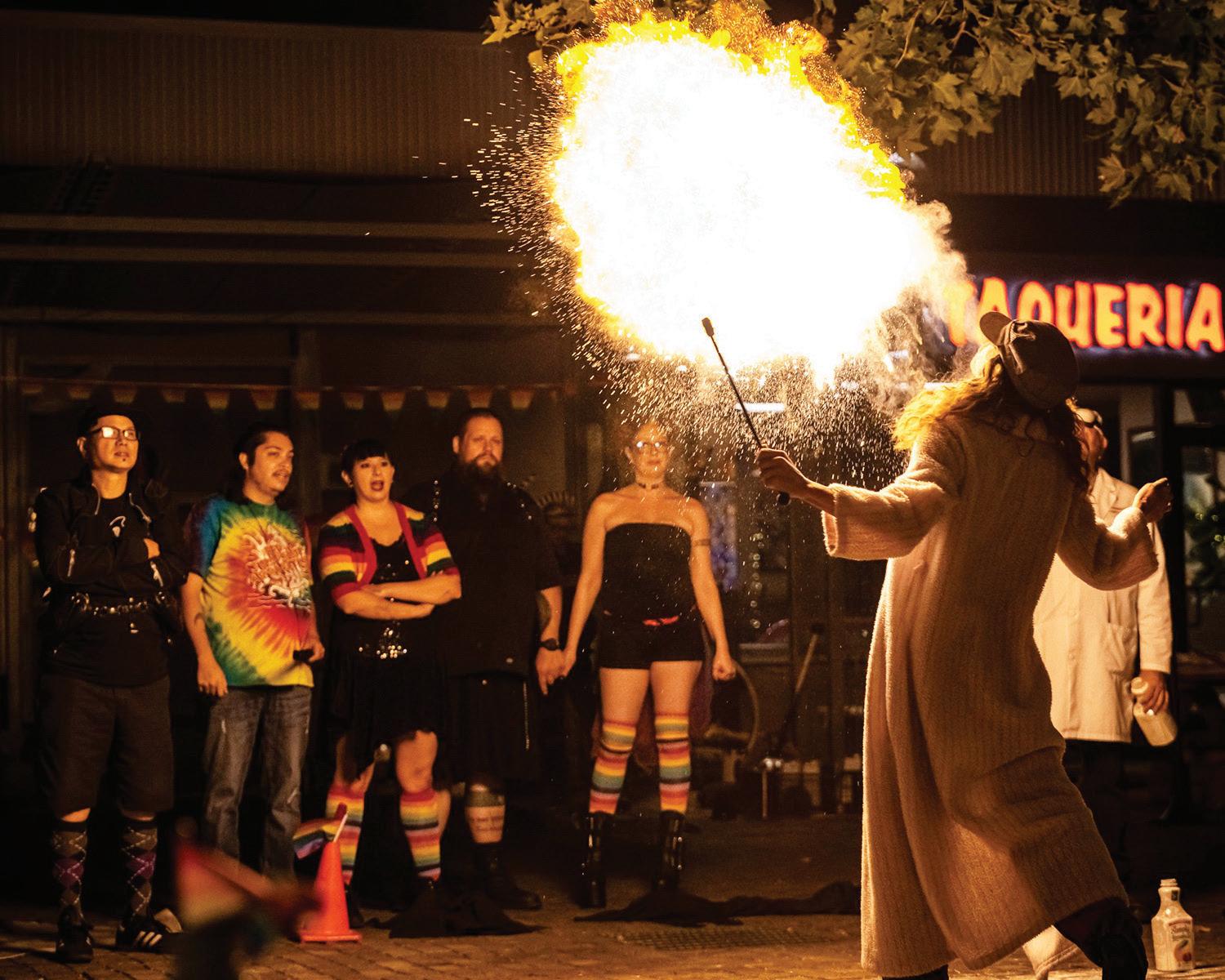
from 4 to 6 p.m. at E Street Plaza (228 E St.), sponsored by the Davis Downtown Business Asso ciation. Partygoers can enjoy music by DJ Duc Jones as well as profes sional fire dancers from Fire University. You'll be in the heart of downtown Davis, surrounded by unique small businesses, art galleries, bars and
retail shopping.
If the two-day festival, grand finale and afterparty still isn't enough to satisfy your Halloweekend appe tite ... This year only — the Zombie Bike Ride will host celebrity comedian and MTV personality Brent Pella at the Zombie Bike Ride Comedy Show and Fundraiser from 7:30 to 9 p.m. Sunday, Oct. 30 at the Davis Odd Fellows Lodge, 415 Second St. in downtown Davis.
Pella is a stand-up comedian and cast mem ber on MTV’s “Wild ’N Out.” Pella's comedy sketches, celebrity impres sions, and parody music videos have gained more than 200 million views online.
Consider supporting the day full of free activities by purchasing a ticket to the comedy show. Tickets are $100 each, and proceeds from ticket sales will go to Norcal Trykers and The Bike Campaign — organi zations that work to make bicycling possible for everyone, including chil dren with disabilities.

For information, contact coordinator Aaron Wedra, at 530-574-7306 or smartzgraphics@yahoo. com.



Jewelry serves a particular role in global feminine culture, helping promote individuality, maintain culture and iden tify influential components of a person’s self.
“It is a really good representation of who you are as an individual, where you come from, and the groups you belong to,” Queer Student Union member Jules Ret ner said.
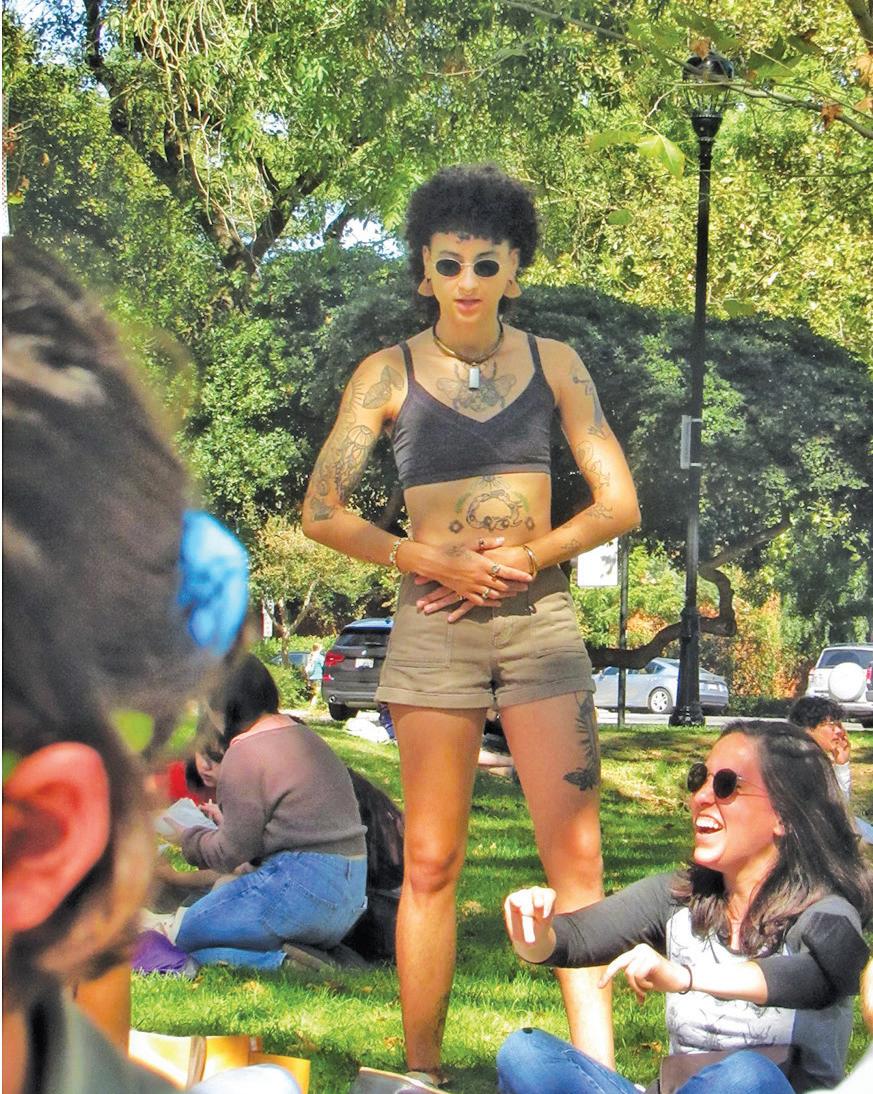
UC Davis professor of design Susan Avila teaches several courses oriented around fashion design and history on campus. She places emphasis on the importance of bodily decorations in rela tion to culture.
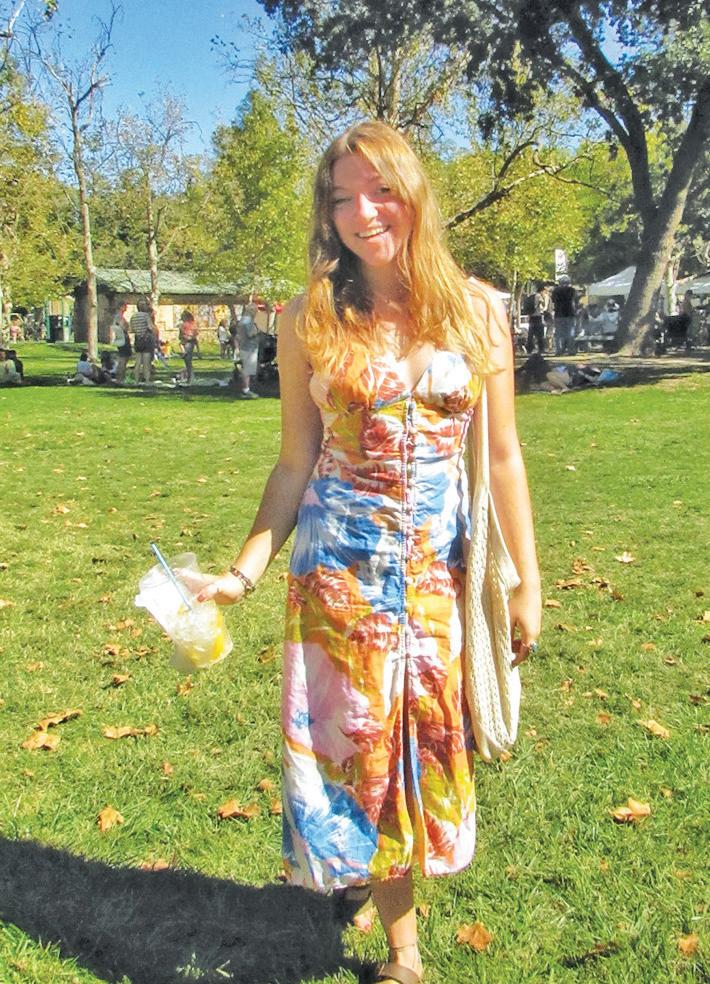
“Personal adornment is one of the fun damental aspects of identity and even in cultures where clothing isn’t worn we often see jewelry or body makeup/tat toos,” Avila said.
Yasmeen Al-Shinnawi is a prominent Palestinian leader on campus. She heads the Arab and South Asian Student Asso ciation, which like the various other cul ture clubs on the Davis High campus, helps provide a sense of community for its members. Jewelry serves to advance this goal.
“With Palestinian jewelry, it has a very deep root in the culture. A long time ago, specifically in Bethlehem, a lot of people would wear a lot of different silver brace lets,” Al-Shinnawi said.
For close to 3500 years, Bethlehem has served as a hub of trade for individuals traveling between Egypt, Syria, and Pales tine. As such, the region boasts a unique catalog of jewelry, especially bracelets.
The Haydari is a common bangle in Palestine which typically holds five gems intended to protect the wearer from the evil eye. As Palestinian olive trees can last up to 2000 years, oftentimes the bands are adorned with their branches, signify ing the long lasting resistance of the Pal estinian people.
“Tatreez are basically this type of embroidery that different women would use from different villages,” Al-Shinnawi said.
This regional embroidery serves to immediately distinguish an individual, and often adorns rings, bracelets, and other varieties of jewelry.
“Gold’s a really big part of our culture. For example if there’s a wedding, the groom’s family might buy a golden set for the bride’s family,” Al-Shinnawi said.
Headpieces are adorned with gold
coins, and are external indicators of wealth amongst Palestinians, and of their culture globally.
Yusuf Abdelnur leads the Black Student Union and is the son of two Eritrean par ents. In Eritrean culture, jewelry presents an outlet for cultural creativity.
“Culturally speaking, jewelry is defi nitely like a form of expression. (Africans) will wear jewelry at special events, at wed dings, at celebrations, at religious events,” Abdelnur said.
Across African culture, there is a par ticular emphasis on the relationship between women and jewelry, who often times adorn themselves with rings, brace lets, necklaces, and head garments.
“I think black culture in general has that trendsetting drive. There’s a lot of things you see in (American) culture that have been popularized by (the Black com munity),” Abdelnur said.
Alongside this innovative mentality, Africa happens to be one of the most resource-rich regions of the planet. As a result, gold has remained a mainstay in its popular culture, even though the popu larity of gold jewelry actually diminished during European colonization.
“We’re trying to take that back and be able to have a political undertone of being able to say we can get (our gold) back,” Abdelnur said.
Alondra Marquez serves as president of Latinos Unidos, and grew up immersed within her own Mexican culture.
In reaction to rigid gender roles within the Latino community, a heavy current of Hispanic feminism has surfaced in the last half century. Jewelry helps empower women.
“For (women) it’s a way of expressing ourselves I would say. A way of showing empowerment for women,” Marquez said.
Prevalent within Chicano culture, hoop earrings have become a staple of the rap idly expanding Mexican-American cul ture.
Due to Latino America’s geography, certain resources and metals appear more frequently.
“We mostly always go for golden (jew elry), which is always the go to,” Marquez said.
Growing up, young Latina girls are adorned with bracelets and necklaces donning their names and national flags. In Latin American hospitals, some new born girls often have their ears pierced immediately after birth.
“For certain people (jewelry) is more to top it off in your outfit. For Latin women, it’s just a part of us,” Marquez said.
Fast fashion brands like H&M, Zara and Shein dominate the market due to their low prices and “on-trend” clothing but can be bad for the environment.
“When it comes to fast fashion, I don’t really like how it’s made and then just thrown away,” senior Heath Gerber said.
Fast fashion brands cut corners when it comes to materials used and production methods in order to save money. Since these pieces last for less time, consumers are forced to come back a lot quicker and spend more money at the store. This cre ates a consumer loop that ends up only benefitting the brand itself.
Popular styles change very quickly, with some brands making as many as 52 “sea sons” or collections per calendar year. This rapidity exacerbates the consumer loop. There’s always more to buy.
“Because the prices are so accessible, and the brands are quick to jump on trends… it is hard to escape the hold that these brands have on youth right now,” senior Nola George said.
These “fast fashion trends” create a lot of waste due to not only the sheer quan tity of pieces made but also the poor qual ity with which the clothes are made, leading to a shorter lifespan for each gar ment and more waste.
One alternative to buying from fast fashion outlets is the growing thrifting market. Davis has a multitude of thrift stores, including Goodwill, Tree House Vintage and Bohème.
“Sustainability is very important to me, and I am lucky enough to have access to thrift stores in my area, which everyone should explore,” George said.
Thrifting not only provides affordable clothing options but also extends the lifespan of pieces and leaves them out of landfills, at least temporarily.
“Thrifting is a way for old clothes to be recycled and a chance for those old clothes to be enjoyed by someone new,” junior Katie Lin said
While thrifting has always been a way that people can find clothes for cheap, the
growing resale market and environmen tally conscious groups have made finding desirable clothes much more difficult.


“I think people that have the money should save thrift stores for people who can’t afford clothes,” junior Harmony Tun said.
Another option is buying “timeless” or higher quality pieces that will last you much longer, but for double the price.
“For the people that can afford higherend clothing that lasts longer, I think it’s a great idea for them to purchase these items,” Tun said. “Unfortunately, due to the price, there’s no way it’s affordable for everyone.”
A good middle ground is to consume less but to either invest into quality pieces or thrift for the clothes that you do have. “Sometimes the best solution to most issues involving waste is to use less stuff,” said Jennifer Gilbert, the City of Davis Conservation Coordinator.
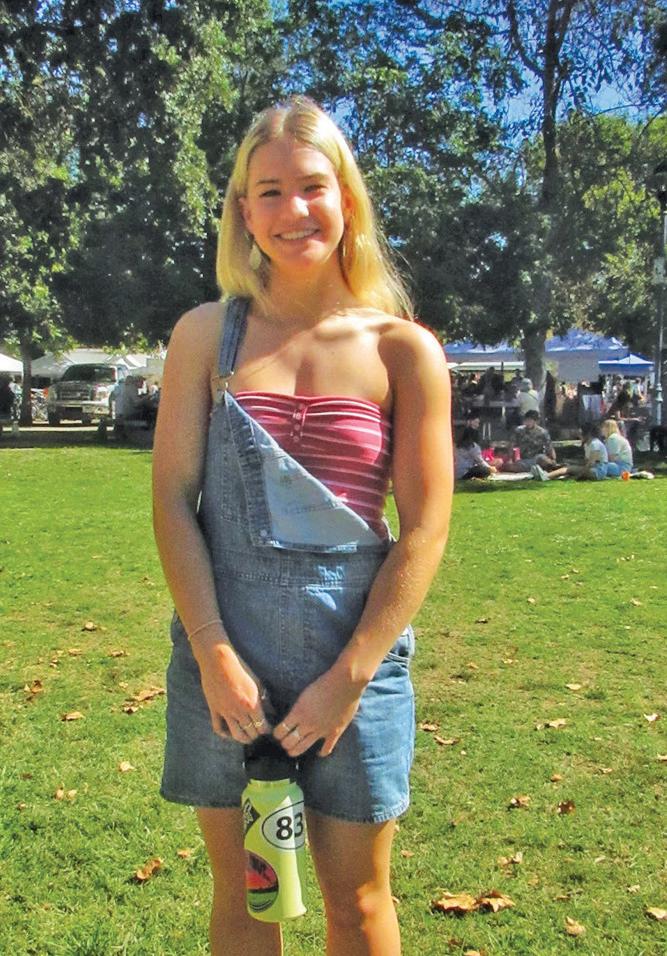
Gilbert thinks that fast fashion compa nies are taking advantage of consumers by ensuring they come back for more due to the low prices, at the cost of the envi ronment.
“Products that are designed to be thrown away after only a few uses neces sitates the creation of new products to replace them, increasing the impact on the environment,” Gilbert said.
Gilbert also thinks it is important to consume less and take care of the clothes you have to make them last longer. “Treat them gently and follow the care instruc tions written on the tag,” Gilbert said.
“I try to not excessively wash my clothes unless it’s necessary,” Tun said. “I end up hand washing a lot of clothes, so I don’t (damage) them.”
By taking care of your clothes through proper washing, drying and maintenance you can extend the life of your pieces while decreasing your overall effect on the environment.
“When I want to get rid of clothes, I’ll ask friends if they want them, or I will cut parts off and sew them onto other clothes,” Gerber said.

Despite their best efforts, the UC Davis men’s water polo team fell to the nation’s top-ranked team at Schaal Aquatics Center on Sunday.

Stanford remains undefeated at 15-0, as it took down the No.7 UC Davis 12-7.
“We got to learn how to play against teams like that,” said UCD head coach Daniel Leyson, whose team now has an 8-5 record. “They put a ton of pressure on us in all facets of the game. In some instances, we were able to handle it, in other instances we weren’t. One of things we didn’t do is take advantage of opportunities when we had them. When you do that against an opponent like Stanford, it makes it hard to emerge victorious. But we did have some good moments.”
One of those good moments was courtesy of redshirt sophomore utility Tyler Mrkaich, who scored three goals in the third quarter, therefore earning his first hat trick as an Aggie. The first goal he scored in the quarter was his first ever goal with UCD.
Mrkaich also found the back of the net in the fourth quarter, giving him a teamleading four goals on the day.
“I know he’s (Mrkaich’s) been capable of it,” said Leyson. I think it’s great. He’s experienced a lot of personal growth this
season. I’m so happy to see him do that. We’ve known he could do it for a long time.”
Stanford struck first with a goal in the fifth minute of the first quarter. The Cardinal found the back of the net in the third minute of the first quarter as well for a 2-0 lead.
At 3:46, Holden Neach deposited a shot in the net for the Aggies, with an assist from Logan Anderson. This cut Stanford’s slim lead to 2-1.
In the second quarter, Stanford held UCD scoreless despite nine shots from the Aggies. The Cardinal added four more goals to their tally for a 6-1 advantage.
After another goal from Stanford at 6:48, Mrkaich found the back of the net for the first time only 22 seconds later, assisted by Colin Nicholls. Stanford then held a 7-2 lead over UCD.
Stanford deposited two more shots in the cage at 6:01 and 4:17 for a 9-2 lead.
Mrkaich then completed his third quarter hat trick with goals at 3:50 and 2:45, the latter assisted by Brady Crouch. This made the score 9-4.
Stanford’s Quinn Woodhead then scored his fourth goal of the quarter at 1:59, meaning both teams had a hat trick earned in the third quarter. Woodhead’s goal made it 10-4.
see HaNGs, PaGe B3
ELK GROVE — There were a few times that the Davis High football team slowed down Elk Grove’s potent running game.
But the Thundering Herd found ways to break through the Blue Devils’ defense in Friday’s Delta League game. That resulted in Elk Grove posting a 57-0 victory over Davis, which its offense averaged 22.5 points per game entering the day.

“Our goal was to force them out, force them to pitch it,” said Davis head coach Nick Garratt of the defensive game plan. “And we did do a good job. We just don’t have the guys in the spots to do that.”
Elk Grove jumped out to a 21-0 lead in the first quarter.
The Thundering Herd scored their first touch down after receiving the opening kickoff. Running back Mason Vazquez scored on a 45-yard run with 11:39 on the clock. Chris Dodson booted the extra point for a 7-0 lead.
After the Blue Devils had their first offensive possession that went three and out, Vazquez
scored again after the Thundering Herd received the punt return. This time, the Herd back scored on a 78-yard run with 8:44 remaining in the first quarter. Dodson’s kick made it 14-0.
Davis (0-3 in the Delta League, 2-5) went another three and out on its second drive of the night, deep in its own territory.
But then the Blue Devils’ defense picked up some momentum, which was short-lived.
Elk Grove, starting from its own 36, gained only two yards and punted for the first time in the game.
“We usually play tough up front on the line, and we did show our strength there,” Garratt said.
Davis got the ball back on the Herd’s punt, as the ball was spotted on the Blue Devil 28. But Elk Grove middle linebacker Isea Liu caught a loose ball intended for Blue Devil wide receiver Sawyer Schoen and raced 32 yards for a 21-0 score with 4:05 left in the quarter.
Elk Grove (2-0 in the Delta League, 3-3) increased its lead to 23-0
BOZEMAN, Mont. — The UC Davis Aggies came into Bobcat Stadium desperately in need of a win against No. 4 Montana State, but it wasn’t to be as the Bobcats dominated the late going to take a 41-24 Big Sky Conference win Saturday night before an overflow crowd of 21,637.
The loss drops the Aggies to 1-4 for the season and 0-2 in Big Sky play, while MSU is now 4-1 and 2-0.
The crowd was just 50 short of the all-time Bobcat Stadium record set earlier this season against McNeese State.
The difference, plainly and simply, was Bobcat quarterback Sean Chambers, a 6-3, 232-pound trans fer from Wyoming who tore up the turf all night long, both on the ground and in the air.
The junior from Kerman High School in Fresno County came in with just 9 completions and 99 yards passing for the season, but proved he could both pass and run with brilliance.
Chambers accounted for five touchdowns and 430 yards of total offense, throwing for 227 yards and two scores and rushing for 203 yards and three touch downs.

“Tonight felt different,” Chambers said afterward.
“I felt like I was in complete control. It slowed down for me. It’s never felt like that before.”
UC Davis head coach Dan Hawkins, while disappointed in a difficult loss, was nevertheless full of praise for the effort his team put forward.
“Our kids battled all night long,” Hawkins said.
“We had to stop No. 10 (Chambers) and we didn’t do that. As a competitor, you have to tip your hat to a guy like that and the game he had. He made good plays, and he made big plays. That’s all to his credit.”
The schedule, in theory at least, should ease up a bit for the Aggies after a rugged start that ended up with losses to three nationally ranked teams.
“We’re still growing and learning, and we’ll get bet ter,” Hawkins added. “We just have to stay with it and
As UC Davis enters a much-needed bye week after the roughest five-game opening stretch in school history, other Big Sky Conference schools continue to dominate the national rankings in the latest Football Championship Subdivision polls.
The Big Sky and the Missouri Valley Football Conference regularly argue over which league is strongest, top to bottom, and both are well represented in the Coaches and Stats polls.
Perennial national champion North Dakota State leads both polls, with fellow MVFC member South Dakota State second in the Stats and third in the Coaches.
After that, it’s all Big Sky in the Stats poll, with Montana third, Montana State fourth, Sacramento State fifth, Weber State seventh and Eastern Washington 24th.
Montana is No. 2 in the Coaches poll and South Dakota State is No. 3, followed by Sac State No. 4, Montana State No. 5, Weber State No. 7 and Eastern Washington No. 21.
Big Sky member Idaho received votes in both polls that would translate to No. 29 in the Stats and No. 33 in the Coaches.
The Aggies, now 1-4, lost to South Dakota State, Weber State and most recently Montana State, plus FBS California, with a lone win over University of San Diego. They resume Big Sky play Oct. 15 at home with a 4 p.m. game against Northern Arizona, also 1-4.
UCD finishes with road games at Idaho, Nov. 12, and Sacramento State, Nov. 19.
n To read the rest of Bob Dunning’s story, visit www.davisenterprise.com, click on the Sports tab and look for the story.
UC Davis volleyball player, junior Shira Lahav, was named Big West Defensive Player of the Week on Mon day.
For Lahav, it was the third career defensive player of the week honor with her last earned recognition in Septem ber 2021.
Lahav did her part turning away opposing offenses over the week, collect ing 55 digs across two conference home victories, including a career-high 37 digs in the five-set win against UC San Diego on Saturday. Lahav also tallied five assists and dished out a service ace over the week.
The native of Bat Hefer, Israel has posted double-digit digs in 11 matches this season. Playing in all 14 games, Lahav leads the Aggies with 204 digs and 3.71 digs per set.
After winning a pair of conference home games, UCD will embark on a stretch of four straight road games,
beginning with a match against CSU Bakersfield at the University Credit Union Center on Friday at 6 p.m.

RIVER HILLS, Wisc. — The UC Davis men’s golf team wrapped up the Marquette Intercollegiate with a 1-overpar, (281) performance to help shoot up the leaderboards on the final day of the tournament.
The Marquette Intercollegiate marked the end of fall competition for the Aggies as the focus shifts toward spring competition that will resume February 2023.
nT o read the rest of Local roundup on UCD men’s golf, Davis High boys water polo and Davis High girls field hockey, visit www.davisenterprise.com and click on the Sports tab.

From
get after it going forward.” Hawkins’ assessment was echoed by Montana State head coach Brent Vigen.
“They’re a good team,” Vigen said of the Aggies.
“They’ve had a tough schedule and a tough start, but they’re a wellrounded team with a lot of different guys who can hurt you. Ultimately, our defense in the second half settled in and we answered their touchdown drive with a great kick return and scored a couple of plays later. That was huge to grab the momentum.”
In a wild and crazy first half that featured enough scoring and yardage for an entire game from both sides, Montana State took
a 24-13 lead into intermission on a 33-yard field goal by Blake Glessner just 15 seconds before the break.
Chambers was a oneman show in the opening 30 minutes, prov ing he could pass after all by hitting 10 of 16 throws for 181 yards and one score.
He also rushed for 121 yards and two scores on just nine carries, several times burning the Aggies with first-down scrambles on third-and-long.
Montana State finished the half with 345 yards of total offense, with the Aggies close behind at 304.
n To ready the rest of Bob Dunning’s story, visit www.davisenterprise.com, click on the Sports tab and look for the story.
From
when Blue Devil running back Cole Broussard was tackled in the Herd’s end zone with 7:54 on the clock in the second quarter.
Thundering Herd quarterback David Hale had a shovel pass of 17 yards to Jeremiah Rosales, who moved his way into the end zone for the score. The extrapoint kick was no good, but Elk Grove increased its lead to 29-0 at the 6:34 mark on the clock.
Dodson, who also plays defensive back, picked off Blue Devil quarterback Braulio Acevedo’s pass that set up the Herd’s final score in the first half. The Thundering Herd capped the 7-play,
45-yard drive when Rosales scored his second touchdown of the game on a 3-yard run with 3:03 on the clock.
Dodson booted the extra point to make it 36-0.
The second half of the league game went with a running clock.
Elk Grove scored two touchdowns in the third quarter for a 50-0 lead, and its final one in the fourth quarter for the final score.
Thundering Herd’s Wayshawn Parker picked off an Acevedo pass and rambled 32 yards for a touchdown with an even 11 minutes left in the third quarter.
n To read the rest of the story, visit www. davisenterprise.com and click on the Sports tab.
From
Aggie Connor Norton answered right back 10 seconds later with a goal for UCD, assisted by Crouch.
Going into the final quarter of the game, Stanford held a 10-5 lead over the Aggies.
UCD struck first in the fourth quarter when Mrkaich fired his fourth goal, with an assist from Anderson. This cut Stan ford’s lead to 10-6.
The Cardinal added two more goals at the sixand four-minute marks for a 12-6 lead.
At the 2:34 mark, the Aggies added a final goal to their score when Levi Murtaugh found the back of the net, assisted by Neach.
This cut Stanford’s
lead to 12-7, but it was fruitless.
Aggies goalie, Aaron Wilson recorded 11 saves in the game.
As a team, UCD took 28 total shots in the game. Mrkaich took five, Aleix Aznar Beltran took four and Norton took three. Anderson, Murtaugh, Andrew Hitchcock, Crouch, Leo Giessmann and Neach took two apiece.
UCD will now head to the Centennial State to take on Air Force on Saturday at the USAF Academy in Colorado Springs, Colo. Game time is set for 11 a.m.
Next home game is against Concordia Univesity on Oct. 16.
This year marks the 30-year anniver sary of the Student Equity Policy, a state-level reform within California’s community colleges focused on improving the conditions and outcomes for students of color. All 116 community colleges in the system and its allies have the chance this fall to craft new three-year plans to deliver on the promise of educational equity. We owe it to our students to develop strategies and actions that can eliminate racial dis parities.
In 1992, the reform called out educational inequities experienced by Black and Latinx students and sought to avoid “a permanent underclass of mostly minority, low-skilled workers.” Unique to the policy was a man date to create a “student equity plan” to iden tify areas of inequity and spur institutional action to address barriers facing students of color.
The policy, known today as the Student Equity and Achievement Program, has received half-a-billion dollars annually from the state and will receive 5% more in the 2022-23 fiscal year. Despite its promise, however, there is little evidence of its effec tiveness or of how it influences more equita ble outcomes for students of color across the nation’s largest higher education system.
A project known as the Student Equity Planning Institute now seeks to produce a better outcome. Our hope is to empower educators to see themselves as agents of change and use their student equity plan as a tool to improve conditions, experiences and outcomes for communities of color.
Traditionally, equity planning is done independently by each institution in the community college system. Through the institute, however, 17 campuses in the Inland Empire region came together to consider regional and systemic issues that impede racial equity. The project used that broader lens to construct the next three-year itera tion of the equity plan to address the racial inequities experienced in community college.
More than 200 educators, students, clas sified professionals, and faculty administra tors from each campus, as well as system-level colleagues, teamed up with equity leaders to envision what a ground-up, race-conscious, community-oriented approach to equity might look like. The beauty of this project is the commitment to identify, disrupt and remove policies, prac tices, programs and mindsets antithetical to equity.
We wish to share the insights from this project for others engaged in this work:
■ Invest in the people who lead policy. Build community, develop trust, create a shared language, enhance competencies and provide the capacity to do this work.
■ Humanize and leverage data for action. Conduct deep inquiries that identify root causes of inequity and recognize that equity gaps are not just percentages but actual stu dents with dreams and aspirations.
■ Call in your institutional leaders. Engage senior leaders early and have them actively participate in discussions and decisions on which student groups to prioritize, which strategies to use to address gaps, and what resources are available to accomplish this work.
■ Heal from institutional trauma. Recog nize that your colleagues doing equity work have most likely experienced heavy resis tance and endured adverse situations advancing equity efforts, and thus need time and space to process the difficult work of leading change.
■ Organize for collective action. We must see racial equity work as a collective effort that acknowledges that no individual response can address systemic inequity; only systemic responses can get us closer to achieving equity.
As argued three decades ago when the Student Equity Policy first was unveiled, “There simply is no realistic alternative to making student equity the highest priority at the state and local levels.” This is still the case in 2022.
— Eric R. Felix is an assistant professor in the College of Education at San Diego State University.
is an excuse for
not thinking. Rather than weigh the pros and cons of a proposal, ideologues turn to trite adages and apho risms.
I was reminded of this when Congressman John Gara mendi reported on Facebook his efforts to relieve traffic congestion in the north Bay Area; and he was met with hisses and boos from the usual suspects in Davis.
On Sept. 7, Mr. Garamendi wrote, “Traffic in the Bay Area is bad. Going east, you’ll get stuck in I-80 traffic. Going to the North Bay … there’s a good chance (Highway) 37 will be moving at a snail’s pace. And perhaps nothing is as bad as going south towards the Bay Bridge.
“That’s why I’ve helped deliver tens of millions of dol lars to expand (Interstate) 80, create high-speed ferry transit from Vallejo to San Francisco, invest in a new bus fleet for Fairfield and Solano County and I’m working to expand Highway 37.”
Kelsey Fortune — who is running for a seat on the Davis City Council and studies “transportation economics” at UCD — replied to Garamendi:
“Expanding highways has no positive impact in the long run. … Induced demand is real, and while this may tem porarily improve congestion, it means more people in private vehicles in the long run which means higher maintenance costs, more heat from road ways and more emissions.”
Her claim is correct in some instances, nonsense in others.
The long-term “no positive impact” notion is not founded on a consensus of research. It’s an ideological apothegm.
Whenever a proposal is made to add lanes to a congested
freeway, those predisposed to hate people in private vehicles reflexively shout, “Induced demand!”
The theory of induced demand (ID) on freeways is the belief that adding capacity — no matter how much — will not ameliorate traffic flow for long. That's balderdash.
Say you have three lanes in one direction and so many cars that, at least during the morning and afternoon rush, traffic moves well below the speed limit. If you then add a fourth, fifth or sixth lane, IDologues will tell you that soon enough the status quo ante will return. They claim that there are thousands of drivers who were not on the road before but will now join that freeway; and the result of their added vehicles will cause the same jam that previously existed.
There are a few special instances to support their claim. But it is not nearly as universal as the ID-ologues profess.
One example of adding a lane resulting in actual induced demand is where you have two alternative insuffi cient routes taking you from Point A to Point B. If you add a little capacity to one route and not the other, more driv ers will shortly opt for the faster commute; and before long it might not be much bet ter on that expanded route. It could be worse if there is also
I hope District 1 voters agree that Dan Carson has not earned a second term on the City Council.
If you were for a Davis Innovation and Sustainability Center (measure H), then you should know Dan Carson’s lawsuit, against fellow Davis residents opposed to measure H, (a lawsuit which Carson tech nically lost), was such an obvious attack on Davis civil engagement that the lawsuit alone sunk Measure H.
If you were for Davis energy indepen
substantial housing and job growth in the area.
Most freeway congestion — especially in the Davis region — is not like that. There are three primary reasons we have such tumescent traffic on our interstate.
The first — which is ignored by the ID-ologues — is popu lation expansion. Since 1978, the Sacramento region has tri pled in size; and millions more people now live in the Bay Area. That’s not demand driven by induction. It’s demand due to migration.
A second cause of our con gestion is inconsistent capacity — aka bottlenecks. They're especially troublesome in the Davis area on Interstate 80.
If you drive on that freeway at 3 a.m. from Mace Boule vard to Pedrick Road in Dixon, there’s normally no blockage. You may not notice that soon after you join I-80 four lanes become three; then a fourth returns west of Rich ards Blvd; then a fifth lane is added as you reach the Mon davi Center; and then one lane is lost as you pass Old Davis Road.
West of Highway 113, I-80 grows from four lanes to five to Kidwell Road, where it again narrows to four; and it reduces to three as you reach Tremont Road. It remains three lanes westbound until you pass the PG&E substation in Vacaville.
Do that same drive to Dixon during daylight hours, and you will detect drivers drasti cally speeding up and slowing down as capacity increases and decreases. The five-lane to three-lane bottleneck design between Kidwell and Pedrick predictably produces the prob lem.
During commute hours, everything stops at Kidwell. In
dence, then you should know that Dan Carson led the closed door effort to allow BrightNight to control Davis land rights for $50,000 dollars a year, when the solar project lifetime electricity value for the site was estimated to be $120 million. No one, including Dan Carson, Brett Lee or any city employee examining deal had com mercial solar development experience.
The Davis Utility Commission voted (5 to 2) to have the City walk away from the BrightNight deal. Davis solar and energy experts condemned the decision. Public pleas to rescind were ignored and publicly rebuked by Dan Carson. (Davis Enterprise April 21, 2020)
The solar BrightNight fiasco and the Measure H lawsuit have caused much
202-224-3553; email: padilla.senate. gov/public/index.cfm/e-mail-me
the middle of the day, speeds fall by 20 mph or more. If we had four lanes in each direc tion everywhere on I-80 from Vacaville to West Sacramento, traffic flow would be far more consistent.
The third main cause of car congestion is simply insuffi cient capacity. Demand has exploded due to population and job growth, yet in many places we have not added enough lanes, trains or buses to accommodate the extra people who commute.
One of the roadways Con gressman Garamendi wants to address is Highway 37. It is just one lane in each direction from Vallejo to Sears Point. That may have been enough capacity when it was built in 1917. It’s now a nightmare.
Go back for a second to what Ms. Fortune claimed: “Expanding highways has no positive impact in the long run.” Now imagine if 37 were expanded from 1 to 5 lanes all the way to Novato. No one in her right mind believes that would have “no positive impact” on Highway 37’s traf fic flow.
I should add that if 37 were widened by several lanes, it would likely induce demand on that highway Some drivers now taking the San Rafael Bridge over San Pablo Bay would switch to State Route 37. But undoubtedly, traffic flow would improve.
To believe that increasing roadway capacity when popu lation is stable and when doing so gets rid of a bottle neck would not benefit traffic flow is ID-ological inanity.
— Rich Rifkin is a Davis resident; his column is pub lished every other week. Reach him at Lxartist@yahoo.com.
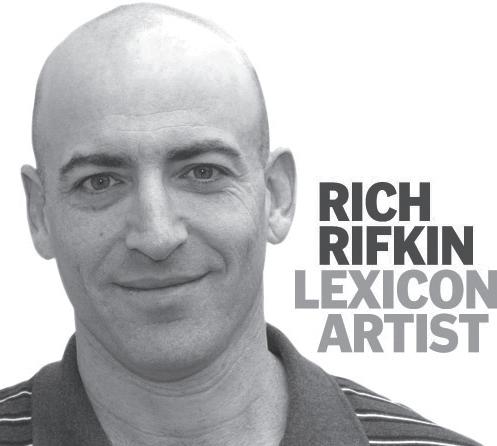

spilled ink, lawyer fees, and lost opportunity. Dan Carson’s actions invoked the unprece dented condemnation of seven former May ors: Krovoza, Davis, Corbett, Greenwald, Wagstaff, Evans, and Kopper. (Davis Enter prise April 27, 2020 and May 18, 2022)
Carson continues to insist that his expe rience, as a former Budget Analyst for the State of California, should pave the way for all to accept his good judgement. Except the record shows, Dan Carson does not have good judgement and does not respect shared decision making.
It’s time for District 1 to have a different representative. Kelsey Fortune or Bapu Vaitla.
Scott Steward DavisThe Hon. Joe Biden, The White House, Washington, D.C., 20500; 202-456-1111 (comments), 202-456-1414 (switchboard); email: http://www.whitehouse.gov/contact
U.S. Senate
Sen. Dianne Feinstein, 331 Hart Senate Office Building, Washington, D.C., 20510; 202-224-3841; email: http://feinstein. senate.gov/public/index.cfm/e-mail-me
Sen. Alex Padilla, B03 Russell Senate Office Building, Washington, D.C., 20510;
Rep. John Garamendi (3rd District), 2368 Rayburn House Office Building, Washington, D.C., 20515; 202-225-1880. District office: 412 G St., Davis, CA 95616; 530-753-5301; email: visit https://garamendi.house.gov/contact/ email
Gov. Gavin Newsom, State Capitol, Suite 1173, Sacramento, CA 95814; 916-4452841; email: visit https://govapps.gov. ca.gov/gov40mail/
Addresses and phone numbers should be included for verification purposes; they will not be published.
Limit letters to 350 words. Anonymous letters will not be accepted. We reserve the right to edit all letters for brevity or clarity.
Mail letters to The Davis Enterprise, P.O. Box 1470, Davis, CA 95617; bring them to 315 G St.; fax them to 530-756-1668; or email them to newsroom@davis enterprise.net.





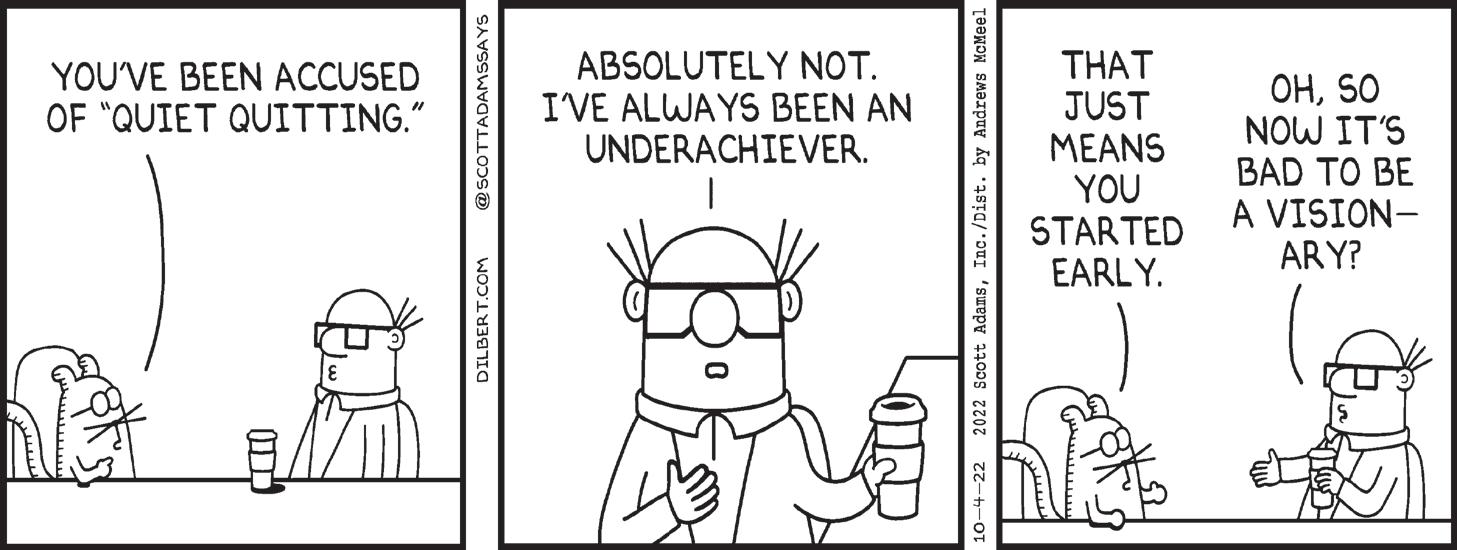 Peanuts By Charles M. Schulz
Peanuts By Charles M. Schulz
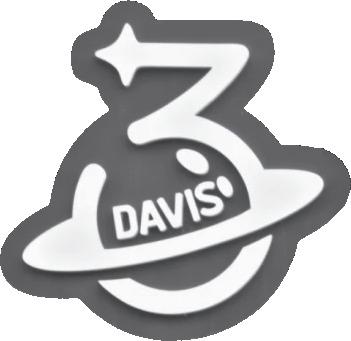



The Friends of Yolo County Animal Shelter invite everyone to join the fun at their Second annual “Pawject Runway” dog fashion show fundraiser. It will be at The Hive, 1221 Harter Ave. in Woodland, from 3 to 7 p.m. Saturday, Oct. 8.
The fashion show starts at 4:30 pm. You can enter your pet in an outfit to compete for “best of” in various categories. Organizers ask for a $5 donation to preregister a dog at form.jotform.com/213047 147078152, or $10 to register the day of the event by 3:30 p.m. Dog participants should be friendly and fully vaccinated.
The Hive is putting together an exciting new menu just for this event! We have some amazing raffle prizes, door prizes (every 30 minutes) music, and a ton of fun.

This year Cassi, the nationally known dog-diving and skateboarding Australian shepherd is back to redeem herself to win a ribbon, but she is facing some stiff completion from Lulu the chi and Roscoe the husky.

This Pawject Runway event will help raise funds for:
■ An Adoption Mobile Van to host more off-site adoption events. It will also be a mobile clinic for microchipping (fewer unclaimed animals), basic vaccines (healthier animals) and licensing (legal animals).

■ Specialized Veterinary Care, because the county animal shelter has only one on-site veterinarian, who primarily does spay and neuters. While the Friends created accounts with three off-site veterinarians to help abandoned animals with special medical needs, we are running out of funds.
The need to raise funds is great because the Yolo County Animal Services Shelter is at capacity. The shelter is working with fosters and rescues to find homes for all animals, but there is a need to increase adoptions. Friends of Yolo County Animal Services, a 501(c)(3) charitable organization, has been a partner with our county animal shelter to help enhance the lives of animals at the Shelter and find them their forever homes.
For information, see the FYCAS website at friends ofycas.org or email ycas friends@gmail.com.

WOODLAND — The local wildlife group Tuleyome is offering two Certified California Naturalist courses in 2023 — one in the winter and one in spring. Instruction focuses on the Berryessa Snow Mountain National Monument region.
The Certified California Naturalist courses are presented by Tuleyome in partnership with the University of California extension program. The winter course will be from January to March in 2023. This course is 10 weeks long (with classes on 10 consecutive Fridays and include at least three field trips. The spring course is a one-week program hosted at Wilbur Hot Springs.
No advanced degrees or previous naturalist experience is required. Both courses cover the same material.
The UC California Naturalist Program is designed to introduce Californians to the wonders of our unique ecology and engage the public in study and stewardship of California’s
natural communities. The program uses a science curriculum, hands-on learning, problem-solving, citizen science, and community service to instill a deep appreciation for the natural communities of the state and to inspire individuals to become stewards of their local resources.
In addition to in-person instruction, students are required to attend field trips in the Berryessa Snow Mountain National Monument region. Field trips consist of low-impact walking trips and auto-tours, so they are suitable for all fitness levels. Impromptu walks are also often provided by the instructors as time permits to give participants even more experience in the field.
Direct questions about the course to Nate Lillge at nlillge@tuleyome.org.
Tuleyome is a nonprofit, non-partisan organization that engages in advocacy and active stewardship with diverse communities to conserve, enhance, restore and enjoy the lands in the region.
